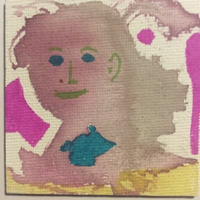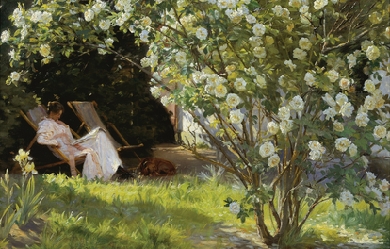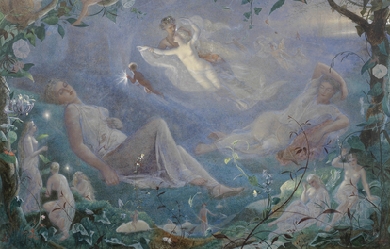
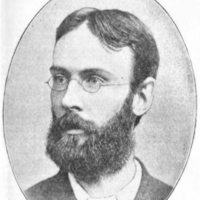
Francis William Lauderdale Adams (27 September 1862– 4 September 1893) was an essayist, poet, dramatist, novelist and journalist who produced a large volume of work in his short life. He was born in Malta the son of Andrew Leith Adams, an army surgeon, who became afterwards well known as a scientist, a fellow of the Royal Society, and an author of natural history books set in different parts of the British empire. Francis’ mother, Bertha Jane Grundy, became a well-known novelist. Francis was educated at Shrewsbury School and from 1879 served as an attaché in Paris. He took up a teaching position as an assistant master at Ventnor on the Isle of Wight, for two years. He joined the Social Democratic Federation in London in 1883. In 1884 he married Helen Uttley and migrated to Australia where he started work as a tutor on a station at Jerilderie, New South Wales, but soon moved on to Sydney and then Queensland, and dedicated himself to writing.
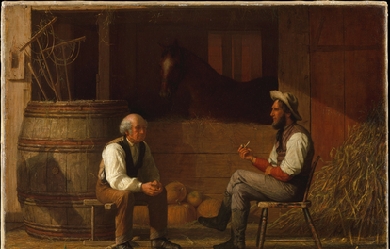
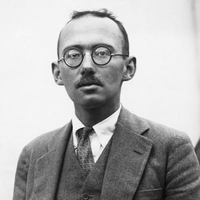
Stephen Vincent Benét (July 22, 1898– March 13, 1943) was an American author, poet, short story writer, and novelist. Benét is best known for his book-length narrative poem of the American Civil War, John Brown’s Body (1928), for which he won a Pulitzer Prize in 1929, and for two short stories, “The Devil and Daniel Webster” (1936) and “By the Waters of Babylon” (1937). In 2009, The Library of America selected Benét’s story “The King of the Cats” (1929) for inclusion in its two-century retrospective of American Fantastic Tales, edited by Peter Straub.
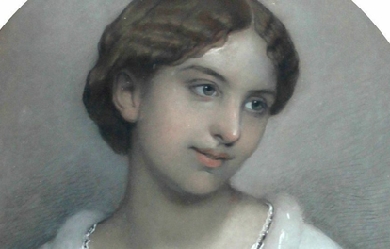

Augusta Webster (30 January 1837 - 5 September 1894) born in Poole, Dorset as Julia Augusta Davies, was an English poet, dramatist, essayist, and translator. The daughter of Vice-admiral George Davies and Julia Hume she spent her younger years on board the ship he was stationed, the Griper. She studied Greek at home, taking a particular interest in Greek drama, and went on to study at the Cambridge School of Art. She published her first volume of poetry in 1860 under the pen name Cecil Homes. In 1863 she married Thomas Webster, a fellow at Trinity College, Cambridge. They had a daughter, Augusta Georgiana, who married Reverend George Theobald Bourke, a younger son of the Joseph Bourke, 3rd Earl of Mayo. Much of Webster’s writing explored the condition of women, and she was a strong advocate of women’s right to vote, working for the London branch of the National Committee for Women’s Suffrage. Webster was the first female writer to hold elective office, having been elected to the London School Board in 1879 and 1885. In 1885 she travelled to Italy in an attempt to improve her failing health. She died on September 5, 1894, at 57. During her lifetime her writing was acclaimed and she was considered by some the successor to Elizabeth Barrett Browning. After her death, however, her reputation quickly declined. Since the mid-1990s she has gained increasing critical attention from scholars such as Isobel Armstrong, Angela Leighton, and Christine Sutphin, Her best-known poems include three long dramatic monologues spoken by women: “A Castaway,” “Circe”, and “The Happiest Girl In The World”, as well as a posthumously published sonnet-sequence, “Mother and Daughter”.

My name is Layla. I'm a 20 year old college student studying literature and criminal justice. I've been writing sine I was very young and have always enjoyed it and I enjoy sharing my writing with everyone who is willing enough to read and give me feedback or have any comments on my writing.
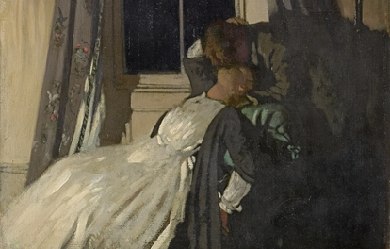
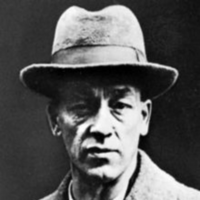
James Stephens (9 February 1880– 26 December 1950) was an Irish novelist and poet. He produced many retellings of Irish myths and fairy tales. His retellings are marked by a rare combination of humour and lyricism (Deirdre, and Irish Fairy Tales are often especially praised). He also wrote several original novels (The Crock of Gold, Etched in Moonlight, Demi-Gods) based loosely on Irish fairy tales. The Crock of Gold in particular has achieved enduring popularity and has often been reprinted.
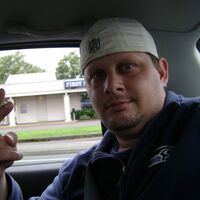
I was born in Vancouver, Washington on August 1st 1978. I have been writing poetry since the age of 16. I love to write and it's my passion. I grew up in a very strict house, I have 4 siblings and two children of my own. I come from a very large family, we all tried to get along together. I've worked in sales in the past, always knew I was better than that. So I am currently getting ready to attend college.
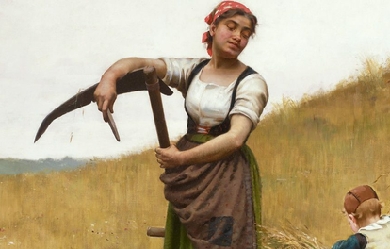
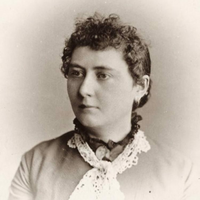
Isabella Valancy Crawford (25 December 1846– 12 February 1887) was an Irish-born Canadian writer and poet. She was one of the first Canadians to make a living as a freelance writer. “Crawford is increasingly being viewed as Canada’s first major poet.” She is the author of “Malcolm’s Katie,” a poem that has achieved “a central place in the canon of nineteenth-century Canadian poetry.” Life Isabella Valancy Crawford was the last surviving daughter of Dr. Stephen Crawford. She was born in Dublin, Ireland on Christmas Day, 1846. The family emigrated to Canada when she was ten years of age. Much of Isabella Crawford’s early life is unknown. By her own account she was born in Dublin, Ireland, the sixth daughter of Dr. Stephen Dennis Crawford and Sydney Scott; but “No record has been found of that marriage or of the birthdates and birthplaces of at least six children, of whom Isabella wrote that she was the sixth.” The family was in Canada by 1857; in that year, Dr. Crawford applied for a license to practice medicine in Paisley, Canada West. “In a few years, disease had taken nine of the twelve children, and a small medical practice had reduced the family to semi-poverty.” Dr. Crawford served as Treasurer of Paisley Township, but "a scandal of a missing $500 in misappropriated Township funds and the subsequent suicide of one of his bondsmen" caused the family to leave Paisley in 1861. By chance Dr. Crawford met Richard Strickland of Lakefield. Strickland invited the Crawfords to live at his home, out of charity, and because Lakefield did not have a doctor. There the family became acquainted with Strickland’s sisters, writers Susanna Moodie and Catherine Parr Traill. Isabella Crawford reportedly began writing at that time. She was also thought to be a close companion of Mrs. Traill’s daughter, Katharine (Katie). In 1869 the family moved to Peterborough, and Crawford began to write and publish poems and stories. Her first published poem, “A Vesper Star”, appeared in The Toronto Mail on Christmas Eve, 1873. "When Dr. Crawford died, on 3 July 1875, the three women"– Isabella, her mother, and her sister Emma, all who were left in the household– “became dependent on Isabella’s literary earnings.” After Emma died of tuberculosis, "Isabella and her mother moved in 1876 to Toronto, which was the centre of the publishing world in Canada.” “Although Isabella had been writing while still living in Lakefield... and had published poems in Toronto newspapers and stories in American magazines while living in Peterborough, when she moved to Toronto she turned her attention in earnest to the business of writing.” “During this productive period she contributed numerous serialized novels and novellas to New York and Toronto publications,” “including the Mail, the Globe, the National, and the Evening Telegram. She also contributed ”a quantity of 'occasional’ verse to the Toronto papers... and articles for the Fireside Monthly. In 1886 she became the first local writer to have a novel, A little Bacchante, serialized in the Evening Globe. In her lifetime Crawford published only one book, Old Spookses’ Pass, Malcolm’s Katie and Other Poems in 1884. It was privately printed and sold poorly. Crawford paid for the printing of 1,000 copies, and presumably sent out many review copies; “there were notices in such London journals as the Spectator, the Graphic, the Leisure Hour, and the Saturday Review. These articles pointed to ‘versatility of talent,’ and to such qualities as ‘humour, vivacity, and range of power,’ which were impressive and promising despite her extravagance of incident and ‘untrained magniloquence.’” However, only 50 books sold. “Crawford was understandably disappointed and felt she had been neglected by 'the High Priests of Canadian Periodical Literature’” (Arcturus 84).” Crawford died on 12 February 1887 in Toronto. She was buried in Peterborough’s Little Lake Cemetery near the Otonabee River. She had died in poverty and for years her body lay in an unmarked grave. A fundraising campaign was begun in 1899, and on 2 November 1900, a six-foot Celtic Cross was raised above her grave, inscribed: "Isabella Valancy Crawford / Poet / By the Gift of God.” Writing Crawford was a prolific writer. “For the most part Crawford’s prose followed the fashion of the feuilleton of the day.” Her magazine writing “displays a skilful and energetic use of literary conventions made popular by Dickens, such as twins and doubles, mysterious childhood disappearances, stony-hearted fathers, sacrificial daughters, wills and lost inheritances, recognition scenes, and, to quote one of her titles, 'A kingly restitution’.” As a whole, though, it “was romantic-Gothic ‘formula fiction.’” It is her poetry that has endured. Just two years after her death, W.D. Lighthall included generous selections from her book in his groundbreaking 1889 anthology, Songs of the Great Dominion, bringing it to a wider audience. “In the 20th century critics have given the work increasing respect and appreciation." "Crawford’s Collected Poems were edited (Toronto 1905) by J.W. Garvin, with an introduction by Ethelwyn Wetherald," a popular Canadian poet. Wetherald called Crawford “purely a genius, not a craftswoman, and a genius who has patience enough to be an artist.” In his 1916 anthology, Canadian Poets, Garvin stated that Crawford was “one of the greatest of women poets.” Poet Katherine Hale, Garvin’s wife, published a volume on Isabella Valancy Crawford in the 1920s Makers of Canada series. All of this helped Crawford’s poetry become more widely known. . A "serious critical assessment began in the mid-1940s with A.J.M. Smith, Northrop Frye, and E.K. Brown, who called her ‘the only Canadian woman poet of real importance in the last century.’" "Recognition of Isabella Valancy Crawford’s extraordinary mythopoeic power, and her structural use of images, came... in James Reaney’s lecture 'Isabella Valancy Crawford’ in Our living tradition (series 3, 1959)." Then a “renewed interest in Crawford resulted in the publication of forgotten manuscripts and critical articles” in the 1970s. "A reprint of the collected poems in 1972, with an introduction by poet James Reaney, made Crawford’s work generally available; six of her short stories, edited by Penny Petrone, appeared in 1975; and in 1977 the Borealis Press published a book of fairy stories and a long unfinished poem, ‘Hugh and Ion.’.” Crawford wrote a wide variety of poems, ranging from the Walter Scott-like doggerel (pun intended) of “Love Me, Love My Dog”, to the eerie mysticism of “The Camp of Souls” to the eroticism of The Lily Bed. But it is mainly Crawford’s "long narrative poems [that] have received particular attention." “Old Spookses’ Pass” is a dialect poem, set in the Rocky Mountains, concerning a dream vision of a midnight cattle stampede towards a black abyss that is stilled by a whirling lariat; “The helot” makes use of the Spartans’ practice of intoxicating their helots to teach their own children not to drink, as the starting-point for a highly incantatory and hypnotic poem that ends in Bacchic possession and death; and “Gisli the Chieftain” fuses mythic elements, such as the Russian spring goddess Lada and the Icelandic Brynhild, into a narrative of love, betrayal, murder, and reconciliation. These poems follow a pattern of depicting the world as a battleground of opposites– light and dark, good and evil– reconciled by sacrificial love.” Malcolm’s Katie The bulk of critical attention has gone to “Malcolm’s Katie.” That poem is a long narrative in blank verse, dealing mainly with the love and trials of young Max and Katie in the 19th-century Canadian bush, but containing a second running narrative recounting the war between the North and South Winds (Winter and Summer personified as First Nations warriors), and also a collection of love songs in different stanza forms. Many of those lauding the poem have seen their own interests reflected in it. For instance, socialist Livesay gave a reading that made the poem sound like a manifesto of Utopian socialism: Crawford presents a new myth of great significance to Canadian literature: the Canadian frontier as creating ‘the conditions for a new Eden,’ not a golden age or a millennium, but ‘a harmonious community, here and now.’ Crawford’s social consciousness and concern for humanity’s future committed her, far ahead of her time and milieu, to write passionate pleas for brotherhood, pacifism, and the preservation of a green world. Her deeply felt belief in a just society wherein men and women would have equal status in a world free from war, class hatred, and racial prejudice dominates all her finest poetry.” Others have similarly seen their concerns reflected in the poem. “Malcolm’s Katie has been given a nationalistic reading by Robin Mathews, a feminist reading by Clara Thomas, a biographical reading by Dorothy Farmiloe and a Marxian reading by Kenneth Hughes, as well as various literary-historical readings by Dorothy Livesay, Elizabeth Waterston, John Ower, Robert Alan Burns and others.” Not just interpretations on the poem’s meaning, but evaluations of its worth, have varied widely. Its detractors have included poet Louis Dudek, who called Crawford “'a failed poet’ of 'hollow convention... counterfeit feeling... and fake idealism’”; and Roy Daniells, who in The Literary History of Canada (1965) called “Malcolm’s Katie” “a preposterously romantic love story on a Tennysonian model in which a wildly creaking plot finally delivers true love safe and triumphant.” Some of the poem’s supporters concede the Tennyson influence but point out that there is much more to it: “While appearing on the surface melodramatic and stereotyped, Crawford’s love story is compelling and powerful; what seems at first a conventional conflict between rival suitors for the hand of the heroine becomes a serious, even profound, account of philosophical, social and ideological confrontations.” “In ‘Malcolm’s Katie’ Crawford adapted to the setting of pioneer Canada the domestic idyll as she learned it from Tennyson. Striking and new, however, is Crawford’s location of Max and Katie’s conventional love story within a context of Native legends—Indian Summer and the battle of the North and South Winds.” This myth telling (however accurate it was as a portrayal of First Nations beliefs) is what many of its supporters see as giving the poem its power. For instance, writing about “Malcolm’s Katie, critic Northrop Frye pronounced Crawford ”the most remarkable mythopoeic imagination in Canadian poetry": the “framework’ of Isabella Crawford is that of an intelligent and industrious female songbird of the kind who filled so many anthologies in the last century. Yet the ”South Wind" passage from Malcolm’s Katie is only the most famous example of the most remarkable mythopoeic imagination in Canadian poetry. She puts her myth in an Indian form, which reminds us of the resemblance between white and Indian legendary heroes in the New World, between Paul Bunyan and Davy Crockett on the one hand and Glooscap on the other. The white myths are not necessarily imitated from the Indian ones, but they may have sprung from an unconscious feeling that the primitive myth expressed the imaginative impact of the country as more artificial literature could never do.” Frye believed, and thought Crawford’s “poetic sense” told her, “that the most obvious development in the romantic landscape is toward the mythological”; and he saw Crawford’s attempt at an indigenous Canadian myth as the intellectual equivalent of the simultaneous pioneer exploration and settlement: “In the long mythopoeic passage from Isabella Crawford’s Malcolm’s Katie, beginning ‘The South Wind laid his moccasins aside,’ we see how the poet is, first, taming the landscape imaginatively, as settlement tames it physically, by animating the lifeless scene with humanized figures, and, second, integrating the literary tradition of the country by deliberately re-establishing the broken cultural link with Indian civilization.” Hugh and Ion Dorothy Livesay, researching Crawford’s life for the Dictionary of Canadian Biography in 1977, discovered the manuscript of an uncompleted narrative poem in the Crawford fonds at Kingston, Ontario’s Queen’s University. Called Hugh and Ion, it deals with "Hugh and Ion, two friends who have fled the noxious city—probably contemporary Toronto—for purification in the primal wilderness [and] carry on a sustained dialogue, Hugh arguing for hope, light, and redemption and Ion pointing out despair, darkness, and intractable human perversity." Perhaps due to Crawford’s Toronto experiences, this last poem marked a significant change in her views, showing the city as “a demonic, urban world of isolation and blindness which has wilfully cut itself off from the regenerative power of the wildernese. The confident innocence and romantic idealism, which account for much of the inner fire of Malcolm’s Katie, have simply ceased to be operative.... Nowhere else in nineteenth-century Canadian literature, with the exception of Lampman’s ”the End of Things", is there another example of the creative imagination being brought to bear, in so Blakean a manner, on the nascent social evils of the ‘infant city.’” Recognition Isabella Valancy Crawford was designated a Person of National Historic Significance in 1947. A small garden park in downtown Toronto, at Front and John Streets (near the CN Tower), has been named Isabella Valancy Crawford Park.

My name is Kailey Nicolaou (Titanium-Heart), my friends call me Kailz or Elly. My work is about my life struggles that have occurred and about faith, hope, depression etc. I have been writing poems, novels and songs since I was young to express my feelings, darkest and lightest thoughts. A lot of my poems are about my daughter Summer Rose Nicolaou who died on 18th December 2008, this was one of my darkest times that I have ever had. I do not speak to many people about my issues, so poetry is my release. I truly hope you enjoy my poetry and follow me for more of my poems, if you do follow me, I will defiantly take the time to look at your work and follow your page as well. Thank you.


Li-Young Lee (李立揚, pinyin: Lǐ Lìyáng) (born August 19, 1957) is an American poet. He was born in Jakarta, Indonesia, to Chinese parents. His maternal great-grandfather was Yuan Shikai, China’s first Republican President, who attempted to make himself emperor. Lee’s father, who was a personal physician to Mao Zedong while in China, relocated his family to Indonesia, where he helped found Gamaliel University. His father was exiled and spent 19 months in an Indonesian prison camp in Macau. In 1959 the Lee family fled the country to escape anti-Chinese sentiment and after a five-year trek through Hong Kong and Japan, they settled in the United States in 1964. Li-Young Lee attended the University of Pittsburgh and the University of Arizona, and the State University of New York at Brockport. Development as a poet Lee attended the University of Pittsburgh, where he began to develop his love for writing. He had seen his father find his passion for ministry and as a result of his father reading to him and encouraging Lee to find his passion, Lee began to dive into the art of language. Lee’s writing has also been influenced by classic Chinese poets, such as Li Bai and Du Fu. Many of Lee’s poems are filled with themes of simplicity, strength, and silence. All are strongly influenced by his family history, childhood, and individuality. He writes with simplicity and passion which creates images that take the reader deeper and also requires his audience to fill in the gaps with their own imagination. These feelings of exile and boldness to rebel take shape as they provide common themes for poems. Lee’s influence on Asian American poetry Li-Young Lee has been an established Asian American poet who has been doing interviews for the past twenty years. Breaking the Alabaster Jar: Conversations with Li-Young Lee (BOA Editions, 2006, ed. Earl G. Ingersoll), is the first edited and published collection of interviews with an Asian American poet. In this book, Earl G. Ingersoll has collected interviews with the poet consisting of “conversational” questions meant to bring out Lee’s views on Asian American poetry, writing, and identity. Awards and honors * Lee has won numerous poetry awards: * 1986: Delmore Schwartz Memorial Award, from New York University, for Rose * 1988: Whiting Award * 1990: Lamont Poetry Selection for The City in Which I Love You * 1995: Lannan Literary Award * 1995: American Book Award, from the Before Columbus Foundation, for The Wingéd Seed: A Remembrance * 2002: William Carlos Williams Award for Book of My Nights (American Poets Continuum) Judge: Carolyn Kizer * 2003: Fellowship of the Academy of American Poets, which does not accept applications and which includes a $25,000 stipend * Fellowship, National Endowment for the Arts * Fellowship, John Simon Guggenheim Memorial Foundation * Grant, Illinois Arts Council * Grant, Commonwealth of Pennsylvania * Grant, Pennsylvania Council on the Arts Other recognition * 2011: Lee’s poem ″A Story″ was featured in the AP English Literature and Composition 2011 Free-Response Questions. Selected bibliography Poetry * * 1986: Rose. Rochester: BOA Editions Limited, ISBN 0-918526-53-1 * 1990: The City In Which I Love You. Rochester: BOA Editions Limited, ISBN 0-918526-83-3 * 2001: Book of My Nights. Rochester: BOA Editions Limited, ISBN 1-929918-08-9 * 2008: Behind My Eyes. New York: W.W. Norton & Co., ISBN 0-393-33481-3 Memoir * * The Wingéd Seed: A Remembrance. (hardcover) New York: Simon & Schuster, 1995. ASIN: B000NGRB2G (paperback) St. Paul: Ruminator, 1999. ISBN 1-886913-28-5 References Wikipedia—https://en.wikipedia.org/wiki/Li-Young_Lee
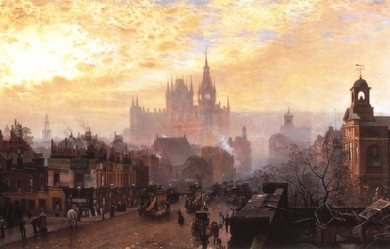
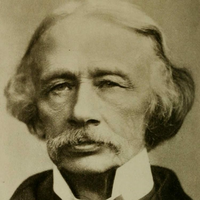
Coventry Kersey Dighton Patmore (23 July 1823– 26 November 1896) was an English poet and critic best known for The Angel in the House, his narrative poem about an ideal happy marriage. The eldest son of author Peter George Patmore, Coventry Patmore was born at Woodford in Essex and was privately educated. He was his father’s intimate and constant companion and inherited from him his early literary enthusiasm. It was Coventry’s ambition to become an artist. He showed much promise, earning the silver palette of the Society of Arts in 1838. In 1839 he was sent to school in France for six months, where he began to write poetry. On his return, his father planned to publish some of these youthful poems; Coventry however had become interested in science, and poetry was set aside.
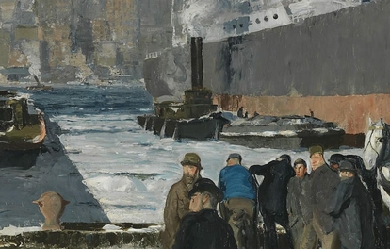
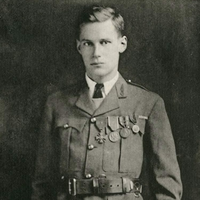
Harry Crosby (June 4, 1898– December 10, 1929) was an American heir, bon vivant, poet, and publisher who for some epitomized the Lost Generation in American literature. He was the son of one of the richest banking families in New England, a Boston Brahmin, and the nephew of Jane Norton Grew, the wife of financier J. P. Morgan, Jr.. As such, he was heir to a portion of a substantial family fortune. He was a volunteer in the American Field Service during World War I, and later served in the U.S. Ambulance Corps. He narrowly escaped with his life. Profoundly affected by his experience in World War I, Crosby vowed to live life on his own terms and abandoned all pretense of living the expected life of a privileged Bostonian. He had his father’s eye for women, and in 1920 met Mrs. Richard Peabody (née Mary Phelps Jacob), six years his senior. They had sex within two weeks, and their open affair was the source of scandal and gossip among blue-blood Boston. Mary (or Polly as she was called) divorced her alcoholic husband and to her family’s dismay married Crosby. Two days later they left for Europe, where they devoted themselves to art and poetry. Both enjoyed a decadent lifestyle, drinking, smoking opium regularly, traveling frequently, and having an open marriage. Crosby maintained a coterie of young ladies that he frequently bedded, and wrote and published poetry that dwelled on the symbolism of the sun and explored themes of death and suicide. Crosby’s life in Paris was at the crossroads of early 20th century Paris literary and cultural life. He numbered among his friends some of the most famous individuals of the early 20th century, including Salvador Dalí, Ernest Hemingway, and Henri Cartier-Bresson. In 1927 Polly took the name Caresse, and she and Crosby founded the Black Sun Press. It was the first to publish works by a number of struggling authors who later became famous, including James Joyce, Kay Boyle, Ernest Hemingway, Hart Crane, D. H. Lawrence, René Crevel, T. S. Eliot, and Ezra Pound. Crosby died scandalously at age 31 as part of a murder–suicide or suicide pact. Early life Harry Crosby (born Henry Sturgis Crosby—his parents Stephen Van Rensslaer Crosby and Henrietta Marion Grew later changed his middle name to “Grew”) was born in Boston’s exclusive Back Bay neighborhood. He was the product of generations of blue-blood Americans, descended from the Van Rensselaers, Morgans, and Grews. His uncle was J. Pierpont Morgan, one of the richest men in America at that time. His father’s mother was the great-granddaughter of Alexander Hamilton. Also among Harry’s ancestors were Revolutionary War General Philip Schuyler and William Floyd, a signer of the Declaration of Independence. He had one sibling, a sister, Katherine Schuyler Crosby, nicknamed Kitsa, who was born in 1901. They moved shortly after his birth to an estate that had, among other things, a dance floor that could accommodate 150 people. His parents instilled in him a love for poetry. He would toss water bombs off the upper stories of the house onto unsuspecting guests. The family spent its summers on the North Shore of Massachusetts at a second home in Manchester, about 25 miles (40 km) from Boston. His religious, affectionate mother loved nature and was one of the founders of the Garden Club of America. His father, a banker, relived his days as a college football star through his Ivy League and Boston society connections. As a child, he attended the exclusive Noble and Greenough School. In 1913, when he was 14 years old, his parents decided it was time to send him to Boston’s foremost prep school, St. Mark’s School, which he graduated from in 1917. World War I At age 19, like many young men of upper-crust American society, Crosby volunteered to serve in the American Ambulance Service in France. A number of writers whose works he would later publish also served in the ambulance corps, including Ernest Hemingway and Malcolm Cowley. He arrived in France on July 7, 1917. When America officially entered the War, the American Ambulance Service corp was integrated into the U. S. Army Ambulance Corps and Crosby enlisted. During the Battle of Verdun he was very close to the front, and ferried wounded soldiers from the front lines to rear areas for three days without relief. On November 22, 1917, as Crosby and his best friend, Way “Spud” Spaulding, and another friend, Ben Weeden, were transporting several wounded soldiers to a medical aid station, Crosby’s Ambulance 741 was hit by an artillery shell that landed 10 feet (3.0 m) away, sending shrapnel ripping through the vehicle, completely destroying it. Miraculously, Crosby was unhurt, but Spaulding, following close behind in another ambulance, was struck in the chest by shrapnel. Crosby and Weeden were able to transport him to a hospital. After leaving Spaulding at the hospital in Beaulieu and returning to the aid station, Crosby was seen running in circles, lap after lap, without apparent purpose. Crosby declared later that that was the night he changed from a boy to a man. From that moment on he never feared death. Spaulding was in intensive care for three months and was released from the hospital after six months. Crosby wrote many letters home during the two years he was in France. Originally convinced that God had “ordained the war” to cleanse the world, his early reports home were good-spirited. Over time, however, he began to describe with an obsessive, perverse delight the horror of trench warfare and awful scenes of dead and dying soldiers. I saw the most gruesome sight I’ve ever seen. Lying on a blood stained brancard was a man—not older than twenty I afterwards ascertained—suffering the agonies of hell. His whole right cheek was completely shot away so you could see all the insides of his face. He had no jaws, teeth, or lips left. His nose was plastered in. Blood was streaming all over. Under his eyes the skin was just dead blue.... It took us an hour driving between two or three miles per hour to get him to his destination. Of course he couldn’t yell as his mouth or what was left of it was a mere mass of pulp. For a while I was afraid our ambulance was to be turned into a hearse, but he was still alive when we got him there. Of course in typical French fashion the doctors held their usual debate of questioning whether it was the right hospital or where his papers were. On August 23–25, 1918, during a battle near Orme, his section (Section Sanitaire 641, attached to the 120th French Division) evacuated more than 2000 wounded and was cited for bravery in the field while under heavy German bombardment. Crosby became in 1919 one of the youngest Americans to be awarded the Croix de guerre. Harry was happy to finally have a medal to prove his valor and wrote home, “Oh Boy!!!!!! won THE CROIX DE GUERRE. Thank God.” When the Armistice was signed, Crosby, like every other soldier, was anxious to go home, but waited for more than a month for orders. He wrote his mother, asking her to get “Uncle Jack” J.P. Morgan to intervene on his behalf. During the war, J.P. Morgan & Company had loaned $1.5 billion dollars (about $20.67 billion in today’s dollars) to the Allies to fight against the Germans. On March 21, 1919, Crosby left Brest for Boston via Philadelphia and arrived home a hero. Attends Harvard After returning from World War I, Crosby attended Harvard in the spring of 1919 under an accelerated program for veterans. He took 19 courses, six in French (which he read and spoke fluently) and six in English literature. The remainder of his courses were in fine arts, music, Spanish, and social ethics. Taking his studies very lightly, he thought he was going to fail, and paid a knowledgeable man who was familiar with what questions would be asked on the exams to tutor him. He graduated with a BA in 1921. But he yearned to escape the rigidity of everyday life in Boston. His experience in France made it unbearable to live among what he called “dreary, drearier, dreariest Boston” and to put up with “Boston virgins who are brought up among sexless surroundings, who wear canvas drawers and flat-heeled shoes.” He wanted to escape “the horrors of Boston and particularly of Boston virgins.” Any sense of propriety was wiped out by a lust for living in the moment, forgetting all risks and possible consequences. Meets Mrs. Richard Peabody Crosby’s mother invited Mrs. Richard Rogers Peabody (née Mary Phelps Jacob) to chaperone Crosby and some of his friends at a picnic on July 4, 1920, including dinner and a trip to the amusement park at Nantasket Beach. During dinner, Crosby never spoke to the girl on his left, breaking decorum. By some accounts, Crosby fell in love with the buxom Mrs. Peabody in about two hours, confessing his love for her in the Tunnel of Love at the amusement park. Two weeks later they went to church together in Manchester-by-the-Sea and spent the night together. Their public relationship was a scandal among blue-blood Boston. She was 28, six years older than Crosby, with two small children, and married. No matter what Crosby tried, Polly would not divorce Richard and marry him. Crosby took a job in Boston at the Shawmut National Bank, a job he disliked, and took the train to visit Polly in New York. In May 1921, when Polly would not respond to his demands, Crosby threatened suicide if Polly did not marry him. Polly’s husband Richard Peabody was in and out of sanitariums several times fighting alcoholism. In June 1921, she formally separated from him. Later that winter, Polly accepted weekend visits from Crosby, who would take the midnight train home to Boston afterward. In December, Polly’s husband Richard offered to divorce her, and in February 1922, their marriage was legally ended. After eight months at the Shawmut National Bank, Crosby got drunk for six days and resigned on March 14, 1922. Polly intervened with Crosby’s uncle, J. P. Morgan, Jr., who agreed to provide a position for Crosby in Paris at Morgan, Harjes et Cie. Crosby already spoke and read fluent French and moved to Paris in May. Polly preceded him there, but when Harry had ongoing trysts with other women, she returned to the United States in July, angry and jealous. On September 2, 1922, Crosby proposed to Polly via transatlantic cable, and the next day bribed his way aboard the Aquitania for New York which made a weekly six-day express run to New York. Polly and Harry marry On September 9, 1922, Crosby and Polly were married in the Municipal Building in New York City, and two days later they re-boarded the RMS Aquitania and moved with her children to Paris, France. There they joined the Lost Generation of expatriate Americans disillusioned by the loss of life in World War I and the moral and social values of their parents’ generation. Crosby continued his work at Morgan, Harjes et Cie, the Morgan family’s bank in Paris. They found an apartment at 12, Quai d’Orléans overlooking the Seine, on the exclusive Île Saint-Louis, and Polly would don her red bathing suit and row Crosby down the Seine in his dark business suit, formal hat, umbrella and briefcase to the Place de la Concorde where he would walk the last few blocks to the bank on Place Vendôme. As she rowed back home, Polly, who was well endowed, would enjoy whistles, jeers and waves from workmen. She said the exercise was good for her breasts. Crosby barely tolerated Polly’s children. After their first year in Paris, her eight-year-old son Billy was shipped off to Le Rosay, an elite boarding school in Gstaad. At the end of 1923, Crosby quit Morgan, Harjes et Cie and devoted himself to the life of a poet, and later, publisher. Polly would attempt to create a family Christmas each year, if only in a hotel, but Crosby regularly boycotted these events, making it clear that he would be looking for flirtations instead. Life as expatriates Both of them were attracted to the bohemian lifestyle of the artists gathering in Montparnasse. Even by the wild standards of Paris in the 1920s, Crosby was in a league of his own. The couple lived a hedonistic and decadent life, including an open marriage and numerous affairs. Crosby was a gambler and a womanizer; he drank “oceans of champagne” and used opium, cocaine, and hashish. They wrote a mutual suicide pact, and carried cremation instructions with them. Polly and Crosby purchased their first race horse in June 1924, and then two more in April 1925. At the end of 1924, Crosby persuaded Polly to formally change her first name to Caresse, as he felt Polly was too prim and proper for his wife. They briefly considered Clytoris before deciding on Caresse. Crosby suggesting that her new name “begin with a C to go with Crosby and it must form a cross with mine.” The two names intersected at right angles at the common “R,” “the Crosby cross.” In 1924, they rented an apartment in the Faubourg St. Germain for six months from Princess Marthe Bibesco, a friend of Crosby’s cousin Walter Berry, for fifty thousand francs (the equivalent of $2,200, about $30,377 in today’s dollars). When they moved in, they brought with them “two maids and a cook, a governess, and a chauffeur.” His inheritance, multiplied by the favorable exchange rate the American dollar enjoyed in postwar Europe, allowed them to indulge in an extravagant expatriate lifestyle. Crosby’s trust fund provided them with US$12,000 a year (or $165,372 in today’s dollars). Still, Crosby repeatedly overdrew his account at State Street Trust in Boston and at Morgan, Harjes, in Paris, which in blue-blood Boston was like writing graffiti on the front door of a church. During 1929, Crosby wired his sensible, reserved father, an investment banker, several times asking him to put more money from his inheritance into his account. In January, he asked his father to sell $4,000 ($55,124 today) worth “to make up for past extravagances in New York” In May, he noted in his diary that he had sold another $4,000 worth of stock “to enjoy life when you can”. In mid-July, drunk on sherry cobblers, he sent a cable to his father, who was not pleased by it: PLEASE SELL $10,000 WORTH OF STOCK. WE HAVE DECIDED TO LIVE A MAD AND EXTRAVAGANT LIFE His father complied but not without rebuking his son for his spendthrift ways. Lifestyle The couple became known for hosting small dinner parties from their giant bed in their palatial townhouse on Île Saint-Louis, and afterward everyone was invited to enjoy their huge bathtub together, taking advantage of iced bottles of champagne near at hand. They took extended traveling tours. In January 1925 they traveled to North Africa where they first smoked opium, a habit to which they would return again and again. Crosby had tattoos on the soles of his feet—a cross on one and a pagan sun symbol on the other. On November 19, 1925, Crosby and Polly rented a fashionable apartment on 19, Rue de Lille which they remained in for the rest of their time in Paris. Crosby developed an obsessive fascination with imagery centering on the sun. His poetry and journals often focused on the sun, a symbol to him of perfection, enthusiasm, freedom, heat, and destruction. Crosby claimed to be a “sun worshiper in love with death.” He often added a doodle of a “black sun” to his signature which also included an arrow, jutting upward from the “y” in Crosby’s last name and aiming toward the center of the sun’s circle: “a phallic thrust received by a welcoming erogenous zone.” Crosby met Ernest Hemingway on a skiing trip to Gstaad in 1926. In July 1927 Crosby and Hemingway visited Pamplona for the running of the bulls. Crosby wrote of Hemingway that “H. could drink us under the table.” Harry and Caresse published the Paris edition of Hemingway’s The Torrents of Spring. In early 1928 they traveled to the Middle East, visiting a number of countries. In late 1928 they secured a 20-year lease on a medieval mill outside of Paris in Ermenonville, France, for living quarters, which they named “Le Moulin du Soleil” ("The Mill of the Sun"). It had three old stone buildings, no electricity or telephone, and a single bathroom. The Crosbys added a racing course on which to play donkey polo and a small swimming pool. The millstream had slowed to a trickle. Inside the mill, Caresse converted the old washrooms and cellars into a large kitchen. The ground floor of the central mill tower served as a dining room, where guests sat on logs cut from the neighboring woods. The mill also contained a solid brass marine cannon that was rolled out for special guests, who were announced with a loud report. A whitewashed wall near the stairway served as a guest book. It was signed by many guests who included D. H. Lawrence, Douglas Fairbanks, the future George VI, and Eva Braun, Adolf Hitler’s future wife. They hosted wild parties at the mill, including drunken polo on donkeys, and entertained famous guests like Salvador Dalí. Henry wrote in his journal: Mobs for luncheon—poets and painters and pederasts and divorcées and Christ knows who and there was a great signing of names on the wall at the foot of the stairs and a firing off of the cannon and bottle after bottle of red wine and Kay Boyle made fun of Hart Crane and he was angry and flung The American Caravan into the fire because it contained a story of Kay Boyle’s (he forgot it had a poem of his in it) and there was a tempest of drinking and polo harra burra on the donkeys. and [sic] an uproar and a confusion so that it was difficult to do my work. Crosby would spend hours sunbathing naked atop the mill’s turret. Contrary to fashion of the day, he would not wear a hat. He often wore a black carnation in his lapel, and was known to color his finger– and toenails. Crosby once hired four horse-drawn carriages and raced them through the Paris streets. He would frequently drop in at Drosso where he would smoke opium. He would stay away from home for days. Crosby experimented with photography and saw the medium as a viable art form before it was widely accepted as such. In 1929, he met Henri Cartier-Bresson in Le Bourget, where Cartier-Bresson’s air squadron commandant had placed him under house arrest for hunting without a license. Crosby persuaded the officer to release Cartier-Bresson into his custody for a few days. The two men had an interest in photography, and Henry presented Henri with his first camera. They spent their time together taking and printing pictures at Crosby’s home, Le Moulin du Soleil. Cartier-Bresson was attracted to Caresse and began a sexual relationship with her that lasted until 1931, two years after Harry’s suicide. Crosby also learned to fly solo in November, 1929 when the aeroplane was so new that its spelling had not been agreed upon. Extra-marital relationships In 1923, shortly after their arrival in Paris, Caresse introduced Crosby to her friend Constance Coolidge, also a Boston Brahmin, an American expatriate. She was the niece of Frank Crowninshield, editor of Vanity Fair, and had been married to American diplomat Ray Atherton. Constance didn’t care what others thought about her. She loved anything risky and was addicted to gambling. Crosby nicknamed her the “Lady of the Golden Horse.” Crosby immediately began a sexual relationship with her that continued for several months. Harry rationalized their affair, telling Constance, “One should follow every instinct no matter where it leads.” In the fall of 1923, Caresse could not put up with their affair any longer and left for London. Harry told Constance the Caresse he could not meet Caresses’ demand that he “love her more than anyone in the world. This is absolutely impossible.” But Crosby would not leave Caresse, nor did Constance ask this of him. But when Constance received a letter from Caresse who confessed that her affair with her husband had made her “very miserable”, Constance wrote Harry and told him she would not see him any more. Harry was devastated by her decision. "Your letter was bar none the worst blow I have ever received. [...] I wouldn’t leave her under any circumstances nor as you say would you ever marry me." But the three remained friends, and on October 1, 1924 Constance married the Count Pierre de Jumilhac, although the marriage only lasted 5 years. In Morocco during one of their trips to North Africa, Crosby and Caresse took a 13-year-old dancing girl named Zora to bed with them. His seductive abilities became legendary in some social circles in Paris, and he engaged in a series of ongoing affairs, maintaining relationships with a variety of beautiful and doting young women. In July 1925, he met a fourteen-year-old girl named “Nubile.” He slept with a 13-year-old Berber girl in North Africa and a young Arab boy in Jerusalem. His wildness was in full flower during the drunken orgies of the annual Four Arts Balls (Bal des Quatz’ Arts). In July 1927, he turned 10 live snakes loose on the dance floor. He wrote in his diary about it later: I remember two strong young men stark naked wrestling on the floor for the honor of dancing with a young girl... and I remember a mad student drinking champagne out of a skull which he had pilfered front my Library as I had pilfered it a year ago from the Catacombs... and in a corner I watched two savages making love... and beside me sitting on the floor a plump woman with bare breasts absorbed in the passion of giving milk to one of the snakes! One year, Caresse showed up topless riding a baby elephant and wearing a turquoise wig. The motif for the ball that year was Inca, and Crosby dressed for the occasion, covering himself in red ocher and wearing nothing but a loincloth and a necklace of dead pigeons. Embracing the open sexuality offered by Crosby and his wife Caresse, Henri Cartier-Bresson fell into an intense sexual relationship with her that lasted until 1931. Black Sun Press In April, 1927, they founded an English language publishing company, first called Éditions Narcisse, after their black whippet, Narcisse Noir. They used the press as an avenue to publish their own poetry in small editions of finely made, hard-bound volumes. They printed limited quantities of meticulously produced, hand-manufactured books, printed on high-quality paper. Publishing in Paris during the 1920s and 1930s put the company at the crossroads of many American writers who were living abroad. In 1928, as Éditions Narcisse, they printed a limited edition of 300 numbered copies of “The Fall of the House of Usher” by Edgar Allan Poe with illustrations by Alastair. In 1928, they found they enjoyed the reception their initial works received, and decided to expand the press to serve other authors, renaming the company the Black Sun Press, following on Crosby’s obsession on the symbolism of the sun. The press rapidly gained notice for publishing beautifully bound, typographically flawless editions of unusual books. They took exquisite care with the books they published, choosing the finest papers and inks. They published early works of a number of writers before they were well known, including James Joyce’s Tales Told of Shem and Shaun (which was later integrated into Finnegans Wake). They published Kay Boyle’s first book-length work, Short Stores, in 1929. and works by Hart Crane, D. H. Lawrence, Ezra Pound, Archibald MacLeish, Ernest Hemingway, Laurence Sterne, and Eugene Jolas. The Black Sun Press evolved into one of the most important small presses in Paris in the 1920s. After Crosby died in a suicide pact with one of his many lovers, Caresse Crosby continued publishing into the 1940s. The Fire Princess On July 9, 1928, Crosby met 20-year-old Josephine Noyes Rotch, the daughter of Arthur and Helen Ludington Rotch in Boston. Ten years his junior, they met while she was shopping in Venice at the Lido for her wedding trousseau. She had belonged to the Vincent Club and the Junior League and graduated from Lee School before she had attended Bryn Mawr. After only two years at Bryn Mawr she left because she planned to marry Albert Bigelow. "She was dark and intense... since the season of her coming out in 1926-7, she had been known around Boston as fast, a 'bad egg’...with a good deal of sex appeal.” They met for sex as often as her eight days in Venice would allow. He would later call her the “Youngest Princess of the Sun” and the “Fire Princess.” She was also from a prominent Boston family that first settled in Provincetown on Cape Cod in 1690. Josephine would inspire Crosby’s next collection of poems which he dedicated to her, titled Transit of Venus. In a letter dated July 24, 1928, Crosby detailed the affair to his mother, in whom he had always confided: I am having an affair with a girl I met (not introduced) at the Lido. She is twenty and has charm and is called Josephine. I like girls when they are very young before they have any minds. Josephine and Crosby had an ongoing affair until June 21, 1929, when she married Albert Smith Bigelow. Their affair was over—until August, when Josephine contacted Crosby and they rekindled the affair as her husband became a first year graduate student of architecture at Harvard. Unlike his wife Caresse, Josephine was quarrelsome and prone to fits of jealousy. She bombarded Crosby with half incoherent cables and letters, anxious to set the date for their next tryst. Visit to United States On November 20, 1929, the Crosbys returned to the United States aboard the RMS Mauretania for a visit and the Harvard-Yale football game. Crosby and Josephine met and traveled to Detroit where they checked into the expensive ($12 a day—about $165 today) Book-Cadillac Hotel as Mr. and Mrs Harry Crane. For four days they took meals in their room, smoked opium, and had sex. On December 7, 1929, the lovers returned to New York where Josephine said she was going to return to Boston and her husband. Crosby’s friend Hart Crane threw a party that evening to celebrate his completion after seven years of his poem, The Bridge. The Black Sun Press was scheduled to publish it the next week, and he wanted to bid Crosby and Caresse bon voyage, since they were due to sail back to France the next week. Among the guests present were Margaret Robson, Malcolm Cowley, Walker Evans, E. E. Cummings, and William Carlos Williams. The party went on until nearly dawn. Crosby and Caresse made plans to see Crane again before they left for Europe on December 10 to attend the popular Broadway play Berkeley Square. On December 9 Josephine, who instead of returning to Boston had stayed with one of her bridesmaids in New York, sent a 36-line poem to Harry Crosby, who was staying with Caresse at the Savoy-Plaza Hotel. The last line of the poem read: Death is our marriage. On the same day, Harry Crosby wrote his final entry in his journal: One is not in love unless one desires to die with one’s beloved. There is only one happiness it is to love and to be loved. Murder and suicide On the evening of the play, December 10, 1929, Caresse, Crosby’s mother Henrietta Grew, and Hart Crane met for dinner before the play, but Crosby was a no-show. It was unlike him to worry Caresse needlessly. She called their friend Stanley Mortimer at his mother’s apartment, whose studio Crosby was known to use for his trysts. He agreed to check his studio. Mortimer had to enlist help to break open the locked door and found Crosby and Josephine’s bodies. Crosby was in bed with a .25 caliber bullet hole in his right temple next to Josephine, who had a matching hole in her left temple, in what appeared to be a suicide pact. Crosby was still clutching the Belgian automatic pistol in one hand, Josephine in the other. The steamship tickets he had bought that morning for the return to Europe with Caresse were in his pocket. The coroner also found in his pocket a cable from Josephine addressed to Crosby on the Mauretania before they arrived in New York: “CABLE GEORGE WHEN YOU ARRIVE AND WHERE I CAN TELEPHONE YOU IMMEDIATELY. I AM IMPATIENT.” A second cable from another girl simply said, “YES.” A picture of Zora, the 13-year-old girl he had sex with in Egypt, was reportedly found in his wallet. The coroner reported that Crosby’s toenails were painted red, and that he had a Christian cross tattooed on the sole of one foot and a pagan icon representing the sun on the other. The coroner concluded that Josephine had died at least two hours before Crosby. There was no suicide note, and newspapers ran sensational articles for days about the murder or suicide pact—they could not decide which. Crosby’s wedding ring was found crushed on the floor, not on his finger, where he always promised Caresse it would remain. Caresse refused to witness the carnage and begged Archibald MacLeish, who was in town from his farm, to take charge. While waiting for the doctors to finish their examination, MacLeish wondered if Crosby’s literary aspirations hadn’t contributed to his death. As I sat there looking at his corpse, seating myself where I wouldn’t have to see the horrible hole in back of his ear, I kept saying to him: you poor, damned, dumb bastard. He was the most literary man I ever met, despite the fact that he’d not yet become what you’d call a Writer. I never met anyone who was so imbued with literature; he was drowned in it. I think I’m close to deciding literature is the one thing never to be taken seriously... Crosby’s suicide, along with Hart Crane’s suicide two-and-a-half years later, were cited by later writers as emblematic of the Lost Generation. Scandal follows The next day the headlines revealed all: Tragedy and Disgrace. As Josephine had died at least two hours before Crosby, and there was no suicide note, newspapers ran articles for many days speculating about the murder or suicide pact. The New York Times front page blared, “COUPLE SHOT DEAD IN ARTISTS’ HOTEL; Suicide Compact Is Indicated Between Henry Grew Crosby and Harvard Man’s Wife. BUT MOTIVE IS UNKNOWN. He Was Socially Prominent in Boston—Bodies Found in Friend’s Suite.” The New York newspapers decided it was a murder-suicide. Gretchen Powell had lunch with Crosby the day of his death. Her memory of the luncheon supported the notion that Josephine was one of Crosby’s many passing fancies. She related that Crosby had told her “the Rotch girl was pestering him; he was exasperated; she had threatened to kill herself in the lobby of the Savoy-Plaza if he didn’t meet her at once.” The deaths polarized the several prominent families affected. The Rotch family considered Josephine’s death to be murder. Josephine’s erstwhile husband Albert Bigelow blamed Crosby for “seducing his wife and murdering her because he couldn’t have her.” Crosby’s poetry possibly gave the best clue to his motives. Death was “the hand that opens the door to our cage the home we instinctively fly to.” His death mortified proper society. Crosby’s biographer Wolff wrote, He had meant to do it; it was no mistake; it was not a joke. If anything of Harry Crosby commands respect, perhaps even awe, it was the unswerving character of his intention. He killed himself not from weariness or despair, but from conviction, and however irrational, or even ignoble, this conviction may have been, he held fast to it as to a principle. He killed himself on behalf of the idea of killing himself. Crosby’s death, given the macabre circumstances under which it occurred, scandalized Boston’s Back Bay society. Legacy Crosby as a poet was never more than a minor literary figure while he lived, and was remembered more for his scandalous suicide over his creative efforts. He has greater importance as a co-founder of the Black Sun Press, which Caresse continued to operate after his death. She also established, with Jacques Porel, a side venture, Crosby Continental Editions, that published paperback books by Ernest Hemingway, William Faulkner, and Dorothy Parker, among others. The paperback books did not sell well, and Crosby Continental closed in 1933. The Black Sun Press, however, continued publishing into the 1950s. The Black Sun Press produced finely crafted books in small editions, including works by, among others, D. H. Lawrence, Archibald MacLeish, James Joyce, Kay Boyle, and Hart Crane. Crosby’s friend Hart Crane committed suicide less than two years later. Malcolm Cowley, whom Crosby had published, wrote in his 1934 book Exile’s Return, that the death of “Harry Crosby becomes a symbol” of the rise and fall of the Jazz Age. He recited the excesses typified by Crosby’s extravagant lifestyle as evidence of the shallowness of society during that era. When he edited and reissued the book in 1951, he softened his opinion of Crosby somewhat. “I had written at length about the life of Harry Crosby, who I scarcely know,” he wrote, “in order to avoid discussing the more recent death of Hart Crane, whom I know so well that I couldn’t bear to write about him.” In 1931, Caresse also published Torchbearer, a collection of his poetry with an afterward by Ezra Pound, and Aphrodite in Flight, a seventy-five paragraph-long prose-poem and how-to manual for lovers that compared making love to a woman to flying planes. Caresse published a boxed set of Crosby’s work titled Collected poems of Harry Crosby containing Chariot of the Sun with D. H. Lawrence’s intro, Transit of Venus with T. S. Eliot’s intro, Sleeping Together with Stuart Gilbert’s intro and Torchbearer in 1931. It was hand-set in dorique type; only 50 copies were printed. During 1931 and 1932, Caresse collaborated with Harry’s mother Henrietta to publish letters he’d written to his family while serving in France from the summer of 1917 until he returned home in 1919. Henrietta added a chronology and brief preface to the letters. The book War Letters was published in a unnumbered edition of 125 copies. As of 2015, a leather-bound edition of the book was priced from $2,000 to $3,500. Caresse Crosby edited and published Crosby’s diaries and papers. She wrote and published Poems for Harry Crosby in 1931. She also published and translated some of the works of Ernest Hemingway, William Faulkner, Dorothy Parker among others. The Black Sun Press enjoyed the greatest longevity among the several expatriate presses founded in Paris during the 1920s. Through 1936, it published nearly three times as many titles as did Edward Titus through his Black Manikin Press. Books printed by the Black Sun Press are valued by collectors. Each book was hand-designed, beautifully printed, and illustrated with elegant typeface. A rare volume published by the Black Sun press of Hart Crane’s book-length poem The Bridge, including photos by Walker Evans, was sold by Christie’s in 2009 for US$21,250. In 2009, Neil Pearson, an antiquarian books expert, said that "A Black Sun book is the literary equivalent of a Braque or a Picasso painting—except it’s a few thousand pounds, not 20 million.” A new collection of Harry Crosby’s poetry, Ladders to the Sun: Poems by Harry Crosby was published by Soul Bay Press in April 2010. In 2004, Fine Line Features optioned Andrea Berloff’s first screenplay "Harry & Caresse." Lasse Hallström was initially attached to direct and Leslie Holleran was attached as a producer. Works * Sonnets for Caresse. (1925) Paris, Herbert Clarke. * Sonnets for Caresse. (1926) 2nd Edition. Paris, Herbert Clarke. * Sonnets for Caresse. (1926) 3rd Edition. Paris, Albert Messein. * Sonnets for Caresse. (1927) 4th Edition. Paris, Editions Narcisse. * Red Skeletons. (1927) Paris, Editions Narcisse. * Hindu Love Manual (1928) 20 copies * Chariot of the Sun. (1928) Paris, At the Sign of the Sundial. * Shadows of the Sun. (1928) Paris, Black Sun Press. * Transit of Venus. Volume 1 .(1928) Paris, Black Sun Press. * Transit of Venus. Volume 2. (1929) Paris, Black Sun Press. 1929 (500 copies printed) * Mad Queen. (1929) Paris, Black Sun Press. * Shadows of the Sun-Series Two. (1929) Paris, Black Sun Press. * The Sun. (1929) Paris, Black Sun Press. * Sleeping Together. (1929) Paris, Black Sun Press. (500 copies printed) * A Sentimental Journey Through France and Italy Laurence Sterne, (1929) Paris, illus. by Polia Chentoff 400 copies * Shadows of the Sun-Series Three. (1930) Paris, Black Sun Press. * Aphrodite in Flight: Being Some Observations on the Aerodynamics of Love. (1930 Paris, Black Sun Press. * Collected Poems of Harry Crosby. (4 Volumes). (1931–32) Paris, Black Sun Press. * War Letters. Preface by Henrietta Crosby. (1932) Paris, Black Sun Press. 125 unnumbered copies. References Wikipedia—https://en.wikipedia.org/wiki/Harry_Crosby
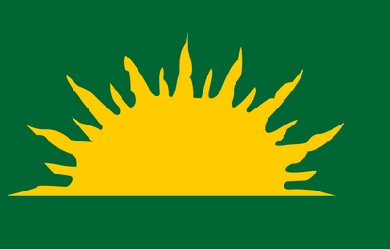
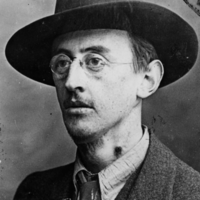
Joseph Mary Plunkett (Irish: Seosamh Máire Pluincéid, 21 November 1887– 12 May 1916) was an Irish nationalist, poet, journalist, and a leader of the 1916 Easter Rising. He was born at 26 Upper Fitzwilliam Street in one of Dublin’s most affluent neighbourhoods. Both his parents came from wealthy backgrounds, and his father, George Noble Plunkett, had been made a papal count. Despite being born into a life of privilege, young Joe Plunkett did not have an easy childhood.
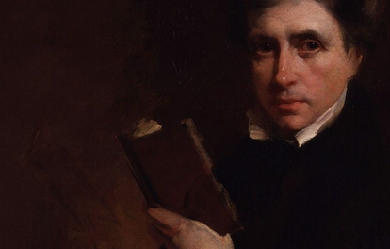
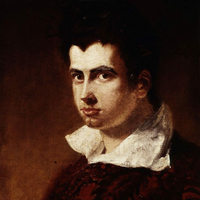
James Henry Leigh Hunt (19 October 1784– 28 August 1859), best known as Leigh Hunt, was an English critic, essayist, poet, and writer. Biography Early life James Henry Leigh Hunt was born at Southgate, London, where his parents had settled after leaving the United States. His father Isaac, a lawyer from Philadelphia, and his mother, Mary Shewell, a merchant’s daughter and a devout Quaker, had been forced to come to Britain because of their loyalist sympathies during the American War of Independence. Hunt’s father took holy orders and became a popular preacher, but he was unsuccessful in obtaining a permanent living. Hunt’s father was then employed by James Brydges, 3rd Duke of Chandos, as tutor to his nephew, James Henry Leigh (father of Chandos Leigh), after whom the boy was named. Education Leigh Hunt was educated at Christ’s Hospital from 1791 to 1799, a period which is detailed in his autobiography. He entered the school shortly after Samuel Taylor Coleridge and Charles Lamb had both left; Thomas Barnes, however, was a school friend of his. One of the current boarding houses at Christ’s Hospital is named after him. As a boy, he was an ardent admirer of Thomas Gray and William Collins, writing many verses in imitation of them. A speech impediment, later cured, prevented his going to university. “For some time after I left school,” he says, “I did nothing but visit my school-fellows, haunt the book-stalls and write verses.” His poems were published in 1801 under the title of Juvenilia, and introduced him into literary and theatrical society. He began to write for the newspapers, and published in 1807 a volume of theatre criticism, and a series of Classic Tales with critical essays on the authors. Hunt’s early essays were published by Edward Quin, editor and owner of The Traveller. Family In 1809, Leigh Hunt married Marianne Kent (whose parents were Thomas and Ann). Over the next 20 years they had ten children: Thornton Leigh (1810–73), John Horatio Leigh (1812–46), Mary Florimel Leigh (1813–49), Swinburne Percy Leigh (1816–27), Percy Bysshe Shelley Leigh (1817–99), Henry Sylvan Leigh (1819–76), Vincent Leigh (1823–52), Julia Trelawney Leigh (1826–72), Jacyntha Leigh (1828–1914), and Arabella Leigh (1829–30). Marianne, who had been in ill health for most of her life, died 26 January 1857, aged sixty-nine. Leigh Hunt made little mention of his family in his autobiography. Marianne’s sister, Elizabeth Kent (Hunt’s sister-in-law), became his amanuensis. Newspapers The Examiner In 1808 he left the War Office, where he had been working as a clerk, to become editor of the Examiner, a newspaper founded by his brother, John. His brother Robert Hunt, among others, also contributed to its columns; his criticism earned the enmity of William Blake, who described the journal’s office at Beaufort Buildings, Strand, London, as containing a “nest of villains”. Blake’s response included Leigh Hunt, who aside from publishing the vitriolic reviews of 1808 and 1809 had added Blake’s name on a list of “quacks”. This journal soon acquired a reputation for unusual political independence; it would attack any worthy target, “from a principle of taste,” as John Keats expressed it. In 1813, an attack on the Prince Regent, based on substantial truth, resulted in prosecution and a sentence of two years’ imprisonment for each of the brothers—Leigh Hunt served his term at the Surrey County Gaol. Leigh Hunt’s visitors in prison included Lord Byron, Thomas Moore, Lord Brougham, Charles Lamb and others, whose acquaintance influenced his later career. The stoicism with which Leigh Hunt bore his imprisonment attracted general attention and sympathy. His imprisonment allowed him many luxuries and access to friends and family, and Lamb described his decorations of the cell as something not found outside a fairy tale. When Jeremy Bentham called on him, he was found playing battledore. A number of essays in The Examiner that were written by Hunt and William Hazlitt between 1814 and 1817 under the series title “The Round Table” were collected in book form in The Round Table, published in two volumes in 1817. Twelve of the fifty-two essays were by Hunt, the rest by Hazlitt. The Reflector In 1810–1811 he edited a quarterly magazine, the Reflector, for his brother John. He wrote “The Feast of the Poets” for this, a satire, which offended many contemporary poets, particularly William Gifford of the Quarterly. The Indicator In 1819–1821, Hunt edited The Indicator, a weekly literary periodical published by Joseph Appleyard. Hunt probably wrote much of the content as well, which included reviews, essays, stories, and poems. Poetry In 1816 he made a mark in English literature with the publication of Story of Rimini, based on the tragic episode of Francesca da Rimini told in Dante’s Inferno. Hunt’s preference was decidedly for Chaucer’s verse style, as adapted to modern English by John Dryden, in opposition to the epigrammatic couplet of Alexander Pope which had superseded it. The poem is an optimistic narrative which runs contrary to the tragic nature of its subject. Hunt’s flippancy and familiarity, often degenerating into the ludicrous, subsequently made him a target for ridicule and parody. In 1818 appeared a collection of poems entitled Foliage, followed in 1819 by Hero and Leander, and Bacchus and Ariadne. In the same year he reprinted these two works with The Story of Rimini and The Descent of Liberty with the title of Poetical Works, and started the Indicator, in which some of his best work appeared. Both Keats and Shelley belonged to the circle gathered around him at Hampstead, which also included William Hazlitt, Charles Lamb, Bryan Procter, Benjamin Haydon, Charles Cowden Clarke, C.W. Dilke, Walter Coulson and John Hamilton Reynolds. This group was known as the Hunt Circle, or, pejoratively, as the Cockney School. Some of Hunt’s most popular poems are “Jenny kiss’d Me”, “Abou Ben Adhem” and “A Night-Rain in Summer”. Friendship with Keats and Shelley He had for some years been married to Marianne Kent. His own affairs were in confusion, and only Percy Bysshe Shelley’s generosity saved him from ruin. In return he showed sympathy to Shelley during the latter’s domestic distresses, and defended him in the Examiner. He introduced Keats to Shelley and wrote a very generous appreciation of him in the Indicator. Keats seems, however, to have subsequently felt that Hunt’s example as a poet had been in some respects detrimental to him. After Shelley’s departure for Italy in 1818, Leigh Hunt became even poorer, and the prospects of political reform less satisfactory. Both his health and that of his wife failed, and he was obliged to discontinue the Indicator (1819–1821), having, he says, “almost died over the last numbers.” Shelley suggested that Hunt go to Italy with him and Byron to establish a quarterly magazine in which Liberal opinions could be advocated with more freedom than was possible at home. An injudicious suggestion, it would have done little for Hunt or the Liberal cause at the best, and depended entirely upon the co-operation of the capricious, parsimonious Byron. Byron’s principal motive for agreeing appears to have been the expectation of acquiring influence over the Examiner, and he was mortified to discover that Hunt was no longer interested in the Examiner. Leigh Hunt left England for Italy in November 1821, but storm, sickness and misadventure retarded his arrival until 1 July 1822, a rate of progress which Thomas Love Peacock appropriately compares to the navigation of Ulysses. The death of Shelley, a few weeks later, destroyed every prospect of success for the Liberal. Hunt was now virtually dependent upon Byron, who did not relish the idea of being patron to Hunt’s large and troublesome family. Byron’s friends also scorned Hunt. The Liberal lived through four quarterly numbers, containing contributions no less memorable than Byron’s “Vision of Judgment” and Shelley’s translations from Faust; but in 1823 Byron sailed for Greece, leaving Hunt at Genoa to shift for himself. The Italian climate and manners, however, were entirely to Hunt’s taste, and he protracted his residence until 1825, producing in the interim Ultra-Crepidarius: a Satire on William Gifford (1823), and his translation (1825) of Francesco Redi’s Bacco in Toscana. In 1825 a litigation with his brother brought him back to England, and in 1828 he published Lord Byron and some of his Contemporaries, a corrective to idealized portraits of Byron. The public was shocked that Hunt, who had been obliged to Byron for so much, would “bite the hand that fed him” in this way. Hunt especially writhed under the withering satire of Moore. For many years afterwards, the history of Hunt’s life is a painful struggle with poverty and sickness. He worked unremittingly, but one effort failed after another. Two journalistic ventures, the Tatler (1830–1832), a daily devoted to literary and dramatic criticism, and Leigh Hunt’s London Journal (1834–1835), were discontinued for want of subscribers, although the latter contained some of his best writing. His editorship (1837–1838) of the Monthly Repository, in which he succeeded William Johnson Fox, was also unsuccessful. The adventitious circumstances which allowed the Examiner to succeed no longer existed, and Hunt’s personality was unsuited to the general body of readers. In 1832 a collected edition of his poems was published by subscription, the list of subscribers including many of his opponents. In the same year was printed for private circulation Christianism, the work afterwards published (1853) as The Religion of the Heart. A copy sent to Thomas Carlyle secured his friendship, and Hunt went to live next door to him in Cheyne Row in 1833. Sir Ralph Esher, a romance of Charles II’s period, had a success, and Captain Sword and Captain Pen (1835), a spirited contrast between the victories of peace and the victories of war, deserves to be ranked among his best poems. In 1840 his circumstances were improved by the successful representation at Covent Garden of his play Legend of Florence. Lover’s Amazements, a comedy, was acted several years afterwards, and was printed in Leigh Hunt’s Journal (1850–1851); other plays remained in manuscript. In 1840 he wrote introductory notices to the work of Sheridan and to Edward Moxon’s edition of the works of William Wycherley, William Congreve, John Vanbrugh and George Farquhar, a work which furnished the occasion of Macaulay’s essay on the Dramatists of the Restoration. The narrative poem The Palfrey was published in 1842. More financial difficulties The time of Hunt’s greatest difficulties was between 1834 and 1840. He was at times in absolute poverty, and his distress was aggravated by domestic complications. By Macaulay’s recommendation he began to write for the Edinburgh Review. In 1844 Mary Shelley and her son, on succeeding to the family estates, settled an annuity of £120 upon Hunt (Rossetti 1890); and in 1847 Lord John Russell procured him a pension of £200. Now living in improved comfort, Hunt published the companion books, Imagination and Fancy (1844), and Wit and Humour (1846), two volumes of selections from the English poets, which displayed his refined, discriminating critical tastes. His book on the pastoral poetry of Sicily, A Jar of Honey from Mount Hybla (1848), is also delightful. The Town (2 vols., 1848) and Men, Women and Books (2 vols., 1847) are partly made up from former material. The Old Court Suburb (2 vols., 1855; ed. A Dobson, 2002) is a sketch of Kensington, where he long resided. In 1850 he published his Autobiography (3 vols.), a naive and affected, but accurate, piece of self-portraiture. A Book for a Corner (2 vols.) was published in 1849, and his Table Talk appeared in 1851. In 1855 his narrative poems, original and translated, were collected under the title Stories in Verse. He died in Putney on 28 August 1859, and is buried at Kensal Green Cemetery. In September 1966 Christ’s Hospital named one of its Houses in memory of him. Leigh Hunt was the original of Harold Skimpole in Bleak House. "Dickens wrote in a letter of 25 September 1853, 'I suppose he is the most exact portrait that was ever painted in words!... It is an absolute reproduction of a real man’; and a contemporary critic commented, 'I recognized Skimpole instantaneously;... and so did every person whom I talked with about it who had ever had Leigh Hunt’s acquaintance.'" G. K. Chesterton suggested that Dickens “may never once have had the unfriendly thought, ‘Suppose Hunt behaved like a rascal!’; he may have only had the fanciful thought, ‘Suppose a rascal behaved like Hunt!’” (Chesterton 1906). Other works Amyntas, A Tale of the Woods (1820), a translation of Tasso’s Aminta Flora Domestica, Or, The Portable Flower-garden: with Directions for the Treatment of Plants in Pots and Illustrations From the Works of the Poets. London: Taylor and Hessey. 1823., with Elizabeth Kent, published anonymously The Seer, or Common-Places refreshed (2 pts., 1840–1841) three of the Canterbury Tales in The Poems of Geoffrey Chaucer modernized (1841) Stories from the Italian Poets (1846) compilations such as One Hundred Romances of Real Life (1843) selections from Beaumont and Fletcher (1855) with S Adams Lee, The Book of the Sonnet (Boston, 1867). His Poetical Works (2 vols.), revised by himself and edited by Lee, were printed at Boston in 1857, and an edition (London and New York) by his son, Thornton Hunt, appeared in 1860. Among volumes of selections are Essays (1887), ed. A Symons; Leigh Hunt as Poet and Essayist (1889), ed. C Kent; Essays and Poems (1891), ed. RB Johnson for the “Temple Library.” His Autobiography was revised shortly before his death, and edited (1859) by his son Thornton Hunt, who also arranged his Correspondence (2 vols., 1862). Additional letters were printed by the Cowden Clarkes in their Recollections of Writers (1878). The Autobiography was edited (2 vols., 1903) with full bibliographical note by Roger Ingpen. A bibliography of his works was compiled by Alexander Ireland (List of the Writings of William Hazlitt and Leigh Hunt, 1868). There are short lives of Hunt by Cosmo Monkhouse ("Great Writers," 1893) and by RB Johnson (1896). Oxford Dictionary of National Biography Volume 28 (2004). References Wikipedia—https://en.wikipedia.org/wiki/Leigh_Hunt
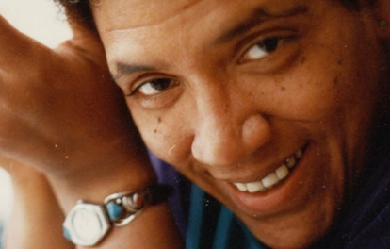
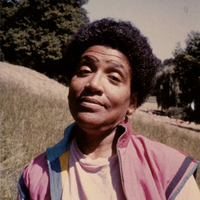
Audre Lorde (/ˈɔːdri lɔːrd/; born Audrey Geraldine Lorde, February 18, 1934– November 17, 1992) was an African American writer, feminist, womanist, lesbian, and civil rights activist. As a poet, she is best known for technical mastery and emotional expression, particularly in her poems expressing anger and outrage at civil and social injustices she observed throughout her life. Her poems and prose largely dealt with issues related to civil rights, feminism, and the exploration of black female identity. In relation to non-intersectional feminism in the United States, Lorde famously said, “Those of us who stand outside the circle of this society’s definition of acceptable women; those of us who have been forged in the crucibles of difference—those of us who are poor, who are lesbians, who are Black, who are older—know that survival is not an academic skill. It is learning how to take our differences and make them strengths. For the master’s tools will never dismantle the master’s house. They may allow us temporarily to beat him at his own game, but they will never enable us to bring about genuine change. And this fact is only threatening to those women who still define the master’s house as their only source of support.” Life and work Lorde was born in New York City to Caribbean immigrants from Barbados and Carriacou, Frederick Byron Lorde (called Byron) and Linda Gertrude Belmar Lorde, who settled in Harlem. Lorde’s mother was of mixed ancestry but could pass for white, a source of pride for her family. Lorde’s father was darker than the Belmar family liked, and they only allowed the couple to marry because of Byron Lorde’s charm, ambition, and persistence. Nearsighted to the point of being legally blind, and the youngest of three daughters (two older sisters, Phyllis and Helen), Audre Lorde grew up hearing her mother’s stories about the West Indies. She learned to talk while she learned to read, at the age of four, and her mother taught her to write at around the same time. She wrote her first poem when she was in eighth grade. Born Audrey Geraldine Lorde, she chose to drop the “y” from her first name while still a child, explaining in Zami: A New Spelling of My Name that she was more interested in the artistic symmetry of the “e”-endings in the two side-by-side names “Audre Lorde” than in spelling her name the way her parents had intended. Lorde’s relationship with her parents was difficult from a young age. She was able to spend very little time with her father and mother, who were busy maintaining their real estate business in the tumultuous economy after the Great Depression, and when she did see them, they were often cold or emotionally distant. In particular, Lorde’s relationship with her mother, who was deeply suspicious of people with darker skin than hers (which Lorde’s was) and the outside world in general, was characterized by “tough love” and strict adherence to family rules. Lorde’s difficult relationship with her mother would figure prominently in later poems, such as Coal’s “Story Books on a Kitchen Table.” As a child, Lorde, who struggled with communication, came to appreciate the power of poetry as a form of expression. She memorized a great deal of poetry, and would use it to communicate, to the extent that, “If asked how she was feeling, Audre would reply by reciting a poem.” Around the age of twelve, she began writing her own poetry and connecting with others at her school who were considered “outcasts” as she felt she was. She attended Hunter College High School, a secondary school for intellectually gifted students, and graduated in 1951. In 1954, she spent a pivotal year as a student at the National University of Mexico, a period she described as a time of affirmation and renewal, during which she confirmed her identity on personal and artistic levels as a lesbian and poet. On her return to New York, she attended Hunter College, graduating class of 1959. There, she worked as a librarian, continued writing and became an active participant in the gay culture of Greenwich Village. She furthered her education at Columbia University, earning a master’s degree in Library Science in 1961. She also worked during this time as a librarian at Mount Vernon Public Library and married attorney Edwin Rollins; they divorced in 1970 after having two children, Elizabeth and Jonathan. In 1966, Lorde became head librarian at Town School Library in New York City, where she remained until 1968. In 1968 Lorde was writer-in-residence at Tougaloo College in Mississippi, where she met Frances Clayton, a white professor of psychology, who was to be her romantic partner until 1989. Lorde’s time at Tougaloo College, like her year at the National University of Mexico, was a formative experience for Lorde as an artist. She led workshops with her young, black undergraduate students, many of whom were eager to discuss the civil rights issues of that time. Through her interactions with her students, she reaffirmed her desire not only to live out her “crazy and queer” identity, but devoted new attention to the formal aspects of her craft as a poet. Her book of poems Cables to Rage came out of her time and experiences at Tougaloo. From 1977 to 1978 Lorde had a brief affair with the sculptor and painter Mildred Thompson. The two met in Nigeria in 1977 at the Second World Black and African Festival of Arts and Culture (FESTAC 77). Their affair ran its course during the time that Thompson lived in Washington, D.C. The Berlin Years In 1984 Audre Lorde started a visiting professorship in Berlin Germany at the Free University of Berlin. She was invited by Dagmar Schultz who met her at the UN “World Women’s Conference” in Copenhagen in 1980. While Lorde was in Germany she made a significant impact on the women there and was a big part of the start of the Afro-German movement. The term Afro-German was created by Lorde and some Black German women as a nod to African-American. During her many trips to Germany, she touched many women’s lives including May Ayim, Ika Hugel-Marshell, and Hegal Emde. All of these women decided to start writing after they met Audre Lorde. She encouraged the women of Germany to speak up and have a voice. Instead of fighting through violence, Lorde thought that language was a powerful form of resistance. Her impact on Germany reached more than just Afro-German women. Many white women and men found Lorde’s work to be very beneficial to their own lives. They started to put their privilege and power into question and became more conscious. Because of her impact on the Afro-German movement, Dagmar Schultz put together a documentary to highlight the chapter of her life that was not known to many. Audre Lorde - The Berlin Years was accepted by the Berlinale in 2012 and from then was showed at many different film festivals around the world and received five awards. The film showed the lack of recognition that Lorde received for her contributions towards the theories of intersectionality. Last years Audre Lorde battled cancer for fourteen years. She was first diagnosed with breast cancer in 1978 and underwent a mastectomy. Six years later, she was diagnosed with liver cancer. After her diagnosis, she chose to become more focused on both her life and her writing. She wrote The Cancer Journals, which won the American Library Association Gay Caucus Book of the Year Award in 1981. She featured as the subject of a documentary called A Litany for Survival: The Life and Work of Audre Lorde, which shows her as an author, poet, human rights activist, feminist, lesbian, a teacher, a survivor, and a crusader against bigotry. She is quoted in the film as saying: “What I leave behind has a life of its own. I’ve said this about poetry; I’ve said it about children. Well, in a sense I’m saying it about the very artifact of who I have been.” From 1991 until her death, she was the New York State Poet Laureate. In 1992, she received the Bill Whitehead Award for Lifetime Achievement from Publishing Triangle. In 2001, Publishing Triangle instituted the Audre Lorde Award to honour works of lesbian poetry. Lorde died of liver cancer on November 17, 1992, in St. Croix, where she had been living with Gloria I. Joseph. She was 58. In an African naming ceremony before her death, she took the name Gamba Adisa, which means “Warrior: She Who Makes Her Meaning Known”. Work Poetry Lorde focused her discussion of difference not only on differences between groups of women but between conflicting differences within the individual. “I am defined as other in every group I’m part of,” she declared. “The outsider, both strength and weakness. Yet without community there is certainly no liberation, no future, only the most vulnerable and temporary armistice between me and my oppression”. She described herself both as a part of a “continuum of women” and a “concert of voices” within herself. Her conception of her many layers of selfhood is replicated in the multi-genres of her work. Critic Carmen Birkle wrote: “Her multicultural self is thus reflected in a multicultural text, in multi-genres, in which the individual cultures are no longer separate and autonomous entities but melt into a larger whole without losing their individual importance.” Her refusal to be placed in a particular category, whether social or literary, was characteristic of her determination to come across as an individual rather than a stereotype. Lorde considered herself a “lesbian, mother, warrior, poet” and used poetry to get this message across. Lorde’s poetry was published very regularly during the 1960s—in Langston Hughes’ 1962 New Negro Poets, USA; in several foreign anthologies; and in black literary magazines. During this time, she was also politically active in civil rights, anti-war, and feminist movements. In 1968, Lorde published The First Cities, her first volume of poems. It was edited by Diane di Prima, a former classmate and friend from Hunter College High School. The First Cities has been described as a “quiet, introspective book,” and Dudley Randall, a poet and critic, asserted in his review of the book that Lorde “does not wave a black flag, but her blackness is there, implicit, in the bone”. Her second volume, Cables to Rage (1970), which was mainly written during her tenure as poet-in-residence at Tougaloo College in Mississippi, addressed themes of love, betrayal, childbirth, and the complexities of raising children. It is particularly noteworthy for the poem “Martha,” in which Lorde openly confirms her homosexuality for the first time in her writing: "[W]e shall love each other here if ever at all.” Nominated for the National Book Award for poetry in 1973, From a Land Where Other People Live (Broadside Press) shows Lorde’s personal struggles with identity and anger at social injustice. The volume deals with themes of anger, loneliness, and injustice, as well as what it means to be an African-American woman, mother, friend, and lover. 1974 saw the release of New York Head Shop and Museum, which gives a picture of Lorde’s New York through the lenses of both the civil rights movement and her own restricted childhood: stricken with poverty and neglect and, in Lorde’s opinion, in need of political action. Despite the success of these volumes, it was the release of Coal in 1976 that established Lorde as an influential voice in the Black Arts Movement (Norton), as well as introducing her to a wider audience. The volume includes poems from both The First Cities and Cables to Rage, and it unties many of the themes Lorde would become known for throughout her career: her rage at racial injustice, her celebration of her black identity, and her call for an intersectional consideration of women’s experiences. Lorde followed Coal up with Between Our Selves (also in 1976) and Hanging Fire (1978). In Lorde’s volume The Black Unicorn (1978), she describes her identity within the mythos of African female deities of creation, fertility, and warrior strength. This reclamation of African female identity both builds and challenges existing Black Arts ideas about pan-Africanism. While writers like Amiri Baraka and Ishmael Reed utilized African cosmology in a way that “furnished a repertoire of bold male gods capable of forging and defending an aboriginal black universe,” in Lorde’s writing “that warrior ethos is transferred to a female vanguard capable equally of force and fertility.” Lorde’s poetry became more open and personal as she grew older and became more confident in her sexuality. In Sister Outsider: Essays and Speeches, Lorde states, "Poetry is the way we help give name to the nameless so it can be thought…As they become known to and accepted by us, our feelings and the honest exploration of them become sanctuaries and spawning grounds for the most radical and daring ideas." Sister Outsider also elaborates Lorde’s challenge to European-American traditions. Prose The Cancer Journals (1980), derived in part from personal journals written in the late seventies, and A Burst of Light (1988) both use non-fiction prose to preserve, explore, and reflect on Lorde’s diagnosis, treatment, and recovery from breast cancer. In both works, Lorde deals with Western notions of illness, treatment, and physical beauty and prosthesis, as well as themes of death, fear of mortality, victimization versus survival, and inner power. Lorde’s deeply personal novel Zami: A New Spelling of My Name (1982), described as a “biomythography,” chronicles her childhood and adulthood. The narrative deals with the evolution of Lorde’s sexuality and self-awareness. In Sister Outsider: Essays and Speeches (1984), Lorde asserts the necessity of communicating the experience of marginalized groups in order to make their struggles visible in a repressive society. She emphasizes the need for different groups of people (particularly white women and African-American women) to find common ground in their lived experience. One of her works in Sister Outsider: Essays and Speeches is “The Master’s Tools Will Never Dismantle the Master’s House.” Lorde questions the scope and ability for change to be instigated when examining problems through a racist, patriarchal lens. She insists that women see differences between other women not as something to be tolerated, but something that is necessary to generate power and to actively “be” in the world. This will create a community that embraces differences, which will ultimately lead to liberation. Lorde elucidates, “Divide and conquer, in our world, must become define and empower." Also, one must educate themselves about the oppression of others because expecting a marginalized group to educate the oppressors is the continuation of racist, patriarchal thought. She explains that this is a major tool utilized by oppressors to keep the oppressed occupied with the master’s concerns. She concludes that in order to bring about real change, we cannot work within the racist, patriarchal framework because change brought about in that will not remain. Another work in Sister Outsider: Essays and Speeches is “The Transformation of Silence into Language and Action.*” Lorde discusses the importance of speaking, even when afraid because one’s silence will not protect them from being marginalized and oppressed. Many people fear to speak the truth because of how it may cause pain, however, one ought to put fear into perspective when deliberating whether to speak or not. Lorde emphasizes that “the transformation of silence into language and action is a self-revelation, and that always seems fraught with danger." People are afraid of others’ reactions for speaking, but mostly for demanding visibility, which is essential to live. Lorde adds, “We can sit in our corners mute forever while our sisters and ourselves are wasted, while our children are distorted and destroyed, while our earth is poisoned; we can sit in our safe corners mute as bottles, and we will still be no less afraid." People are taught to respect their fear of speaking more than silence, but ultimately, the silence will choke us anyway, so we might as well speak the truth. In 1980, together with Barbara Smith and Cherríe Moraga, she co-founded Kitchen Table: Women of Color Press, the first U.S. publisher for women of color. Lorde was State Poet of New York from 1991 to 1992. Theory Her writings are based on the “theory of difference,” the idea that the binary opposition between men and women is overly simplistic; although feminists have found it necessary to present the illusion of a solid, unified whole, the category of women itself is full of subdivisions. Lorde identified issues of class, race, age, gender, and even health– this last was added as she battled cancer in her later years– as being fundamental to the female experience. She argued that, although differences in gender have received all the focus, it is essential that these other differences are also recognized and addressed. “Lorde,” writes the critic Carmen Birkle, “puts her emphasis on the authenticity of experience. She wants her difference acknowledged but not judged; she does not want to be subsumed into the one general category of ‘woman.’” This theory is today known as intersectionality. While acknowledging that the differences between women are wide and varied, most of Lorde’s works are concerned with two subsets that concerned her primarily—race and sexuality. In Ada Gay Griffin and Michelle Parkerson’s documentary A Litany for Survival: The Life and Work of Audre Lorde, Lorde says, "Let me tell you first about what it was like being a Black woman poet in the ‘60s, from jump. It meant being invisible. It meant being really invisible. It meant being doubly invisible as a Black feminist woman and it meant being triply invisible as a Black lesbian and feminist". In her essay “The Erotic as Power,” written in 1978 and collected in Sister Outsider, Lorde theorizes the Erotic as a site of power for women only when they learn to release it from its suppression and embrace it. She proposes that the Erotic needs to be explored and experienced wholeheartedly, because it exists not only in reference to sexuality and the sexual, but also as a feeling of enjoyment, love, and thrill that is felt towards any task or experience that satisfies women in their lives, be it reading a book or loving one’s job. She dismisses “the false belief that only by the suppression of the erotic within our lives and consciousness can women be truly strong. But that strength is illusory, for it is fashioned within the context of male models of power.” She explains how patriarchal society has misnamed it used it against women, causing women to fear it. Women also fear it because the erotic is powerful and a deep feeling. Women must share each others’ power rather than use it without consent, which is abuse. They should do it as a method to connect everyone in their differences and similarities. Utilizing, the erotic as power allows women to use their knowledge and power to face the issues of racism, patriarchy, and our anti-erotic society. Contemporary feminist thought Lorde set out to confront issues of racism in feminist thought. She maintained that a great deal of the scholarship of white feminists served to augment the oppression of black women, a conviction that led to angry confrontation, most notably in a blunt open letter addressed to the fellow radical lesbian feminist Mary Daly, to which Lorde claimed she received no reply. Daly’s reply letter to Lorde, dated 4½ months later, was found in 2003 in Lorde’s files after she died. This fervent disagreement with notable white feminists furthered Lorde’s persona as an outsider: "In the institutional milieu of black feminist and black lesbian feminist scholars [...] and within the context of conferences sponsored by white feminist academics, Lorde stood out as an angry, accusatory, isolated black feminist lesbian voice". The criticism was not one-sided: many white feminists were angered by Lorde’s brand of feminism. In her 1984 essay “The Master’s Tools Will Never Dismantle the Master’s House,” Lorde attacked underlying racism within feminism, describing it as unrecognized dependence on the patriarchy. She argued that, by denying difference in the category of women, white feminists merely furthered old systems of oppression and that, in so doing, they were preventing any real, lasting change. Her argument aligned white feminists who did not recognize race as a feminist issue with white male slave-masters, describing both as “agents of oppression.” Lorde’s comments on feminism In Audre Lorde’s “Age, Race, Class, and Sex: Women Redefining Difference,” she writes: “Certainly there are very real differences between us of race, age, and sex. But it is not those differences between us that are separating us. It is rather our refusal to recognize those differences, and to examine the distortions which result from our misnaming them and their effects upon human behavior and expectation.” More specifically she states: “As white women ignore their built-in privilege of whiteness and define woman in terms of their own experience alone, then women of color become ‘other’.” Self-identified as “a forty-nine-year-old Black lesbian feminist socialist mother of two,” Lorde is considered as “other, deviant, inferior, or just plain wrong” in the eyes of the normative “white male heterosexual capitalist” social hierarchy. “We speak not of human difference, but of human deviance,” she writes. In this respect, Lorde’s ideology coincides with womanism, which “allows black women to affirm and celebrate their color and culture in a way that feminism does not.” Influences on Black Feminism Lorde’s work on black feminism continues to be examined by scholars today. Jennifer C. Nash examines how black feminists acknowledge their identities and find love for themselves through those differences. Nash cites Lorde, who writes, “I urge each one of us here to reach down into that deep place of knowledge inside herself and touch that terror and loathing of any difference that lives there. See whose face it wears. Then the personal as the political can begin to illuminate all our choices." Nash explains that Lorde is urging black feminists to embrace politics rather than fear it, which will lead to an improvement in society for them. Lorde adds, “Black women sharing close ties with each other, politically or emotionally, are not the enemies of Black men. Too frequently, however, some Black men attempt to rule by fear those Black women who are more ally than enemy.” Lorde insists that the fight between black women and men must end in order to end racist politics. Personal Identity Throughout Lorde’s career she included the idea of a collective identity in many of her poems and books. Audre Lorde did not just identify with one category but she wanted to celebrate all parts of herself equally. She was known to describe herself as African-American, black, feminist, poet, mother, etc. In her novel Zami: A New Spelling of My Name Lorde focuses on how her many different identities shape her life and the different experiences she has because of them. She shows us that personal identity is found within the connections between seemingly different parts of life. Personal identity is often associated with the visual aspect of a person, but as Lies Xhonneux theorizes when identity is singled down to just to what you see, some people, even within minority groups, can become invisible. In her late book The Cancer Journals she said “If I didn’t define myself for myself, I would be crunched into other people’s fantasies for me and eaten alive.” This is important because an identity is more than just what people see or think of a person, it is something that must be defined by the individual. “The House of Difference” is a phrase that has stuck with Lorde’s identity theories. Her idea was that everyone is different from each other and it is the collective differences that make us who we are, instead of one little thing. Focusing on all of the aspects of identity brings people together more than choosing one piece of an identity. Audre Lorde and womanism Audre Lorde’s criticism of feminists of the 1960s identified issues of race, class, age, gender and sexuality. Similarly, author and poet Alice Walker coined the term “womanist” in an attempt to distinguish black female and minority female experience from “feminism”. While “feminism” is defined as “a collection of movements and ideologies that share a common goal: to define, establish, and achieve equal political, economic, cultural, personal, and social rights for women” by imposing simplistic opposition between “men” and “women,” the theorists and activists of the 1960s and 1970s usually neglected the experiential difference caused by factors such as race and gender among different social groups. Womanism and its ambiguity Womanism’s existence naturally opens various definitions and interpretations. Alice Walker’s comments on womanism, that “womanist is to feminist as purple is to lavender,” suggests that the scope of study of womanism includes and exceeds that of feminism. In its narrowest definition, womanism is the black feminist movement that was formed in response to the growth of racial stereotypes in the feminist movement. In a broad sense, however, womanism is “a social change perspective based upon the everyday problems and experiences of black women and other women of minority demographics,” but also one that “more broadly seeks methods to eradicate inequalities not just for black women, but for all people” by imposing socialist ideology and equality. However, because womanism is open to interpretation, one of the most common criticisms of womanism is its lack of a unified set of tenets. It is also criticized for its lack of discussion of sexuality. Lorde actively strived for the change of culture within the feminist community by implementing womanist ideology. In the journal "Anger Among Allies: Audre Lorde’s 1981 Keynote Admonishing the National Women’s Studies Association," it is stated that Lorde’s speech contributed to communication with scholars’ understanding of human biases. While “anger, marginalized communities, and US Culture” are the major themes of the speech, Lorde implemented various communication techniques to shift subjectivities of the “white feminist” audience. Lorde further explained that “we are working in a context of oppression and threat, the cause of which is certainly not the angers which lie between us, but rather that virulent hatred leveled against all women, people of color, lesbians and gay men, poor people—against all of us who are seeking to examine the particulars of our lives as we resist our oppressions, moving towards coalition and effective action.” Audre Lorde and critique of womanism A major critique of womanism is its failure to explicitly address homosexuality within the female community. Very little womanist literature relates to lesbian or bisexual issues, and many scholars consider the reluctance to accept homosexuality accountable to the gender simplistic model of womanism. According to Lorde’s essay “Age, Race, Class, and Sex: Women Redefining Difference,” “the need for unity is often misnamed as a need for homogeneity.” She writes, “A fear of lesbians, or of being accused of being a lesbian, has led many Black women into testifying against themselves.” Contrary to this, Audre Lorde was very open to her own sexuality and sexual awakening. In Zami: A New Spelling of My Name, her famous “biomythography” (a term coined by Lorde that combines “biography” and “mythology”) she writes, “Years afterward when I was grown, whenever I thought about the way I smelled that day, I would have a fantasy of my mother, her hands wiped dry from the washing, and her apron untied and laid neatly away, looking down upon me lying on the couch, and then slowly, thoroughly, our touching and caressing each other’s most secret places.” According to scholar Anh Hua, Lorde turns female abjection—menstruation, female sexuality, and female incest with the mother—into powerful scenes of female relationship and connection, thus subverting patriarchal heterosexist culture. With such a strong ideology and open-mindedness, Lorde’s impact on lesbian society is also significant. An attendee of a 1978 reading of Lorde’s essay “Uses for the Erotic: the Erotic as Power” says: “She asked if all the lesbians in the room would please stand. Almost the entire audience rose.” Tributes The Callen-Lorde Community Health Center is an organization in New York City named for Michael Callen and Audre Lorde, which is dedicated to providing medical health care to the city’s LGBT population without regard to ability to pay. Callen-Lorde is the only primary care center in New York City created specifically to serve the LGBT community. The Audre Lorde Project, founded in 1994, is a Brooklyn-based organization for queer people of color. The organization concentrates on community organizing and radical nonviolent activism around progressive issues within New York City, especially relating to queer and transgender communities, AIDS and HIV activism, pro-immigrant activism, prison reform, and organizing among youth of color. The Audre Lorde Award is an annual literary award presented by Publishing Triangle to honor works of lesbian poetry, first presented in 2001. In 2014 Lorde was inducted into the Legacy Walk, an outdoor public display in Chicago, Illinois that celebrates LGBT history and people.

I'm 15 years old. I live in Missouri in the United States. I like soccer, singing, and writing. I've been writing poems and songs ever since I could pick up a pencil. Please read my poems and feedback would literally mean the world to me. You'll learn much more about me through my poems than through reading this stupid box.
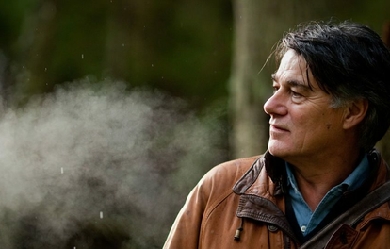
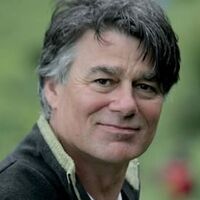
David Whyte (born 2 November 1955) is an English poet. He is quoted as saying that all of his poetry and philosophy is based on "the conversational nature of reality". Life and Work Whyte's mother was from Waterford, Ireland, and his father was a Yorkshireman. He attributes his poetic interest to both the songs and poetry of his mother's Irish heritage and to the landscape of West Yorkshire. He grew up in West Yorkshire and has commented that he had "a Wordsworthian childhood", in the fields, woods and on the moors. Whyte has a degree in Marine zoology from Bangor University. During his twenties Whyte worked as a naturalist and lived in the Galapagos Islands, where he experienced a near drowning on the southern shore of Hood Island. He led anthropological and natural history expeditions in the Andes the Amazon and the Himalayas. Whyte moved to the US in 1981 and began a career as a poet and speaker in 1986. From 1987 he began taking his poetry and philosophy to larger audiences including consulting and lecturing on organisational leadership models in the US and UK exploring the role of creativity in business. He has worked with companies such as Boeing, AT&T, NASA, Toyota, The Royal Air Force and the Arthur Andersen accountancy group. Work and vocation and "Conversational Leadership" is the subject of several of Whyte's prose books, including Crossing the Unknown Sea: Work as Pilgrimage of Identity, The Three Marriages: Reimagining Work, Self and Relationship and The Heart Aroused: Poetry and the Preservation of The Soul in Corporate America (top of business best seller list). Whyte has written seven volumes of poetry and four books of prose. Pilgrim is based on the human need to travel, "From here to there". The House of Belonging looks at the same human need for home. He describes his collection Everything Is Waiting For You (2003) as arising from the grief at the loss of his mother. His latest book is Consolations: The Solace, Nourishment and Underlying Meaning of Everyday Words, an attempt to "rehabilitate" many everyday words we often use only in pejorative or unimaginative ways. He has also written for newspapers including The Huffington Post and The Observer. He leads group poetry and walking journeys regularly in Ireland, England and Italy. He has an honorary degree from Neumann College, Pennsylvania, and is Associate Fellow of both Templeton College, Oxford, and the Saïd Business School, Oxford. Whyte runs the Many Rivers organisation and Invitas: The Institute for conversational leadership, which he founded in 2014. He has lived in Seattle and on Whidbey Island and currently lives in Langley, in the US Pacific North West and holds dual US-British citizenship. He has one daughter, Charlotte, from his second marriage to Dr. Leslie Cotter, from whom he divorced in November 2014, and a son, Brendan from his first marriage to Autumn Preble. Whyte has practised Zen and was a regular rock climber. He was a close friend of the Irish poet John O'Donohue. Poetry Collections * Pilgrim (2012) * River Flow: New & Selected Poems Revised Edition (Many Rivers Press 2012) * River Flow: New & Selected Poems 1984–2007 (Many Rivers Press 2007) * Everything is Waiting for You (Many Rivers Press 2003) * The House of Belonging (Many Rivers Press 1996) * Fire in the Earth (Many Rivers Press 1992) * Where Many Rivers Meet (Many Rivers Press 1990) * Songs for Coming Home (Many Rivers Press 1984) Prose * The Three Marriages: Reimagining Work, Self & Relationship (Riverhead 2009) * Crossing the Unknown Sea: Work as A Pilgrimage of Identity (Riverhead 2001) * The Heart Aroused: Poetry & the Preservation of the Soul in Corporate America (Doubleday/Currency 1994) * Consolations: The Solace Nourishment and Underlying Meaning of Everyday Words" (Many Rivers Press 2015) References Wikipedia—http://en.wikipedia.org/wiki/David_Whyte_(poet)
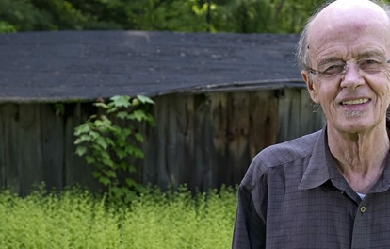
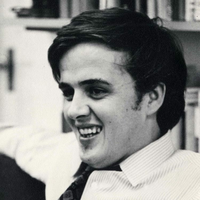
James Vincent Tate (December 8, 1943– July 8, 2015) was an American poet whose work earned him the Pulitzer Prize and the National Book Award. He was a professor of English at the University of Massachusetts Amherst and a member of the American Academy of Arts and Letters. Biography Tate was born in Kansas City, Missouri, where he lived with his mother and his grandparents in his grandparents’ house. His father, a pilot in World War II, had died in combat on April 11, 1944, before Tate was a year old. Tate and his mother moved out after seven years when she remarried. The eventual poet said he belonged to a gang in high school and had little interest in literature. He planned on being a gas station attendant as his uncle had been, but finding that his friends to his surprise were going to college, he applied to Kansas State College of Pittsburg (now Pittsburg State University) in 1961. Tate wrote his first poem a few months into college with no external motivation; he observed that poetry “became a private place that I was hugely drawn to, where I could let my daydreams—and my pain—come in completely disguised. I knew from the moment I started writing that I never wanted to be writing about my life.” In college he read Wallace Stevens and William Carlos Williams and was “in heaven”. He received his B.A. in 1965, going on to earn his M.F.A. from the University of Iowa’s famed Writer’s Workshop. During this period he was finally exposed to fellow poets and he became interested in surrealism, reading Max Jacob, Robert Desnos, and André Breton; for Benjamin Péret he expressed particular affection. Of poets writing in Spanish, César Vallejo “destroyed” him but he was not so taken by the lyricism or romanticism of Pablo Neruda or Federico García Lorca. He was married to Dara Wier. Tate died on July 8, 2015 at the age of 71. Career Tate taught creative writing at the University of California, Berkeley, Columbia University, and at the University of Massachusetts Amherst, where he worked from 1971 until his death in 2015. He was a member of the poetry faculty at the MFA Program for Poets & Writers, along with Dara Wier and Peter Gizzi. Dudley Fitts selected Tate’s first book of poems, The Lost Pilot (1967), for the Yale Series of Younger Poets while Tate was still a student at the Writers’ Workshop; Fitts praised Tate’s writing for its “natural grace.” Tate’s first volume of poetry, Cages, was published by Shepherd’s Press, Iowa City, 1966. Tate won the 1992 Pulitzer Prize and the Poetry Society of America’s William Carlos Williams Award in 1991 for his Selected Poems. In 1994, he won the National Book Award for his poetry collection Worshipful Company of Fletchers. Tate’s writing style is often described as surrealistic, comic and absurdist. His work has captivated other poets as diverse as John Ashbery and Dana Gioia. Regarding his own work, Tate said, “My characters usually are—or, I’d say most often, I don’t want to generalize too much—but most often they’re in trouble, and they’re trying to find some kind of life.” This view is supported by the poet Tony Hoagland’s observation that “his work of late has been in prose poems, in which his picaresque speaker or characters are spinning through life, inquisitive and clueless as Candide, trying to identify and get with the fiction of whatever world they are in.” In addition to many books of poetry, he published two books of prose, Dreams of a Robot Dancing Bee (2001) and The Route as Briefed (1999). Some of Tate’s additional awards included a National Institute of Arts and Letters Award, the Wallace Stevens Award, and fellowships from the Guggenheim Foundation and the National Endowment for the Arts. He was also a Chancellor of the Academy of American Poets. Published works Full-length poetry collections Dome of the Hidden Pavilion (Ecco Press, 2015) The Eternal Ones of the Dream: Selected Poems 1990-2010 (Ecco Press, 2012) The Ghost Soldiers (Ecco Press, 2008) Return to the City of White Donkeys (Ecco Press, 2004) Memoir of the Hawk (Ecco Press, 2002) Shroud of the Gnome (Ecco Press, 1997) Worshipful Company of Fletchers: Poems (Ecco Press, 1994)—winner of the National Book Award Selected Poems (Wesleyan University Press, 1991)—winner of the Pulitzer Prize and the William Carlos Williams Award Distance from Loved Ones (Wesleyan University Press, 1990) Reckoner (Wesleyan University Press, 1986) Constant Defender (Ecco Press, 1983) Riven Doggeries (Ecco Press, 1979) Viper Jazz (Wesleyan University Press, 1976) Absences: New Poems (Little, Brown & Co., 1972) Hints to Pilgrims (Halty Ferguson, 1971) The Oblivion Ha-Ha (Little, Brown & Co., 1970) The Lost Pilot (Yale University Press, 1967) Chapbooks The Zoo Club (Rain Taxi, 2011) Lost River (Sarabande Books, 2003) Police Story (Rain Taxi, 1999) Bewitched: 26 poems (Embers Handpress, Wales, illustration by Laurie Smith.) Just Shades (Parallel Editions, 1985, illustrated by John Alcorn) Land of Little Sticks (Metacom Press, 1981) Apology for Eating Geoffrey Movius’ Hyacinth (Unicorn Press, 1972) Amnesia People (Little Balkans Press, 1970) Wrong Songs (H. Ferguson, 1970) Shepherds of the Mist (Black Sparrow Press, 1969) The Torches (Unicorn Press, 1968) Prose Dreams of a Robot Dancing Bee: 44 Stories (Verse Press, 2002) The Route as Briefed (University of Michigan Press, 1999) Hottentot Ossuary (Temple Bar Bookshop, 1974) Collaborations Lucky Darryl (Release Press, 1977, a novel co-written with Bill Knott) Are You Ready, Mary Baker Eddy??? (Cloud Marauder Press, 1970, poems co-written with Bill Knott) In anthologies Tate’s work has been included in The Best American Poetry series numerous times, including in 2010, 2008, 2006, 2005, 2004, 2003, 2001, 1998, 1997, 1994, 1993, 1991, 1990, and 1988; his work was also in the The Norton Anthology of Modern and Contemporary Poetry. Honors and awards Tate was elected to the American Academy of Arts and Letters in 2004; other recognition includes: Pulitzer Prize for Poetry National Institute of Arts and Letters Award Guggenheim Fellowship National Endowment for the Arts Literature Fellowship in Poetry National Book Award for Poetry 1995 Wallace Stevens Award Yale Series of Younger Poets References Wikipedia—https://en.wikipedia.org/wiki/James_Tate_(writer)

Marriott Edgar (1880–1951), born George Marriott Edgar in Kirkcudbright, Scotland, was a poet, scriptwriter and comedian best known for writing many of the monologues performed by Stanley Holloway, particularly the 'Albert’ series. In total he wrote sixteen monologues for Stanley Holloway, whilst Holloway himself wrote only five. Family background Edgar’s parents were Jennifer née Taylor, a native of Dundee, and Richard Horatio Marriott Edgar (1847–1894), only son of Alice Marriott (1824–1900), proprietress of the Marriott family theatre troupe. Richard was born in Manchester, Lancashire, near Christmas 1847 as Richard Horatio Marriott; both his two sisters, Adeline Marriott (b. 1853) and Grace Marriott (b. 1858) were also born in Lancashire. Later all three children chose to take the surname of their mother’s husband, Robert Edgar, whom she married in 1856. Richard and Jenny married in March 1875, with Richard being unaware that he had fathered an illegitimate namesake son, Richard Horatio Edgar Wallace, with widowed actress Mrs Mary Jane “Polly” Richards, after a brief sexual encounter. Polly had invented an obligation in London to hide her pregnancy and give birth in secret on 1 April 1875, almost a month after Richard and Jenny married. This son became the famous journalist, novelist, playwright and screenplay writer Edgar Wallace. Richard and Jenny Taylor’s children were Alice Marriott Edgar (b. 1876, London), twins Richard and Jennifer Marriott Edgar (b. 1878, London), after whose births the family moved to Scotland where George was born, then returning to London where Joseph Marriott Edgar was born in 1884 and Adeline Alice Edgar in 1886. Early career Little is recorded of George Marriott Edgar’s early career, but he was talented performer, poet and writer. His first real successes began after he had been in the cast of The Co-Optimists and worked with Stanley Holloway. At the start of the 1930s they went to Hollywood, where Edgar– who had dropped his first name for the professional appellation Marriott Edgar– met his famous half-brother. Monologues Holloway was already enjoying some success with the monologue format, with such classics as Sam, Pick Oop Tha’ Musket. Edgar asked him if he had heard a story about a couple who had taken their son to the zoo, only to see the lad eaten by a lion. Holloway had indeed heard the story, and shortly afterwards Edgar supplied him with a script. The Lion and Albert became one of Holloway’s most popular pieces, one of many he recorded beginning in 1930. The lion of the poem is named “Wallace”, which was the name of the first African lion to be bred in Britain, living from 1812 until 1838, and his name became a popular one for lions. Edgar gave the poem the titleThe Lion and Albert but some later performances and re-publications used the form Albert and the Lion. The nearby pub also uses the latter form. The monologues were designed to be spoken rhythmically, with piano accompaniment which in many cases was also composed by Edgar. The texts were published by Francis, Day & Hunter during the 1930s in three collections. All were illustrated by John Hassall, many of whose lively images also became classics. Edgar’s compositions were Albert 'Arold and Others– performed by Stanley Holloway and Marriott Edgar * The Lion and Albert: Albert swallowed by a lion in the menagerie of Blackpool Tower * Runcorn Ferry (Tuppence per Person per Trip), set in Runcorn * Three Ha’pence a Foot, featuring an argument with Noah * The Battle of Hastings, an account of the Battle of Hastings * Marksman Sam, featuring Stanley Holloway’s creation Sam Small * Albert and the 'Eadsman, set in the Tower of London * The Return of Albert (Albert Comes Back), sequel to The Lion and Albert * Goalkeeper Joe, set in Wigan * Gunner Joe, at the Battle of Trafalgar * The Jubilee Sov’rin, the awkward loss of a sovereign commemorating Queen Victoria’s Diamond Jubilee * The Magna Charter, the signing of Magna Carta * Little Aggie, an elephant Albert and Balbus and Samuel Small– written and performed by Marriott Edgar * Sam’s Medal (not written by Edgar) * The 'Ole in the Ark, a necessary repair to Noah’s Ark * Sam’s Racehorse, an unfortunate purchase * George and the Dragon, an unhelpful pub landlady * The Recumbent Posture, a linguistic misunderstanding * The Channel Swimmer, an attempt on the English Channel * Asparagus, a cautionary tale * Uppards, a Lancashire version of Longfellow’s famous poem Excelsior * Joe Ramsbottom, a farmer and the squire * Burghers of Calais, retelling the story of the Burghers of Calais * Balbus (The Great Wall of China), a fantasy based on the Latin text-book example: “Balbus built a wall” * Jonah and the Grampus, the story of Jonah Normans and Saxons and Such– some Ancient History * Canute the Great 1017–1035, about Cnut the Great * William Rufus 1087–1100, about William II of England * Queen Matilda 1100–1135, about Empress Matilda * The Fair Rosamond 1154–1189, about Rosamund Clifford * Richard Cœur-de-Lion 1189–1199, about Richard I of England * Henry the Seventh 1485–1509, about Henry VII of England * The Lion and Albert and The Return of Albert have been translated into German under the titles Der Löwe und Albert and Albert kommt wieder, na klar! respectively. Film scriptwriting Between 1936 and 1944 Edgar worked for Gainsborough Pictures as a scriptwriter for a number of British films, all comedies except The Ghost Train, such as Marriage and family In 1904 in Brentford he married Mildred Williams. They had a son, Hindle (1905–1985) who was an actor. Edgar died in Battle, East Sussex, 5 May 1951. References Wikipedia—https://en.wikipedia.org/wiki/Marriott_Edgar
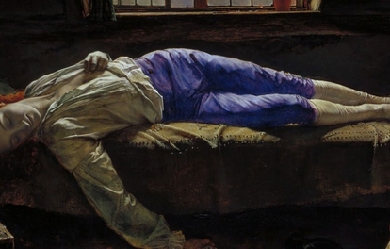
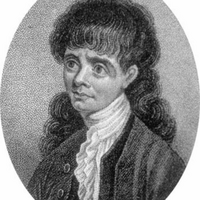
Thomas Chatterton (20 November 1752– 24 August 1770) was an English poet and forger of pseudo-medieval verse. Although fatherless and raised in poverty, he was an exceptionally studious child, publishing mature work by the age of eleven. He was able to pass-off as an imaginary 15th-century poet called Thomas Rowley, chiefly because few people at the time were familiar with medieval poetry, though he was denounced by Horace Walpole. At seventeen, he sought outlets for his political writings in London, having impressed the Lord Mayor, William Beckford, and the radical leader John Wilkes, but his earnings were not enough to keep him, and he poisoned himself in despair. His unusual life and death attracted much interest among the romantic poets, and Alfred de Vigny wrote a play about him that is still performed today. The oil-painting The Death of Chatterton by Pre-Raphaelite artist Henry Wallis has enjoyed lasting fame. Childhood Chatterton was born in Bristol where the office of sexton of St Mary Redcliffe had long been held by the Chatterton family. The poet’s father, also named Thomas Chatterton, was a musician, a poet, a numismatist, and a dabbler in the occult. He had been a sub-chanter at Bristol Cathedral and master of the Pyle Street free school, near Redcliffe church. After Chatterton’s birth (15 weeks after his father’s death on 7 August 1752), his mother established a girls’ school and took in sewing and ornamental needlework. Chatterton was admitted to Edward Colston’s Charity, a Bristol charity school, in which the curriculum was limited to reading, writing, arithmetic and the catechism. Chatterton, however, was always fascinated with his uncle the sexton and the church of St Mary Redcliffe. The knights, ecclesiastics and civic dignitaries on its altar tombs became familiar to him. Then he found a fresh interest in oaken chests in the muniment room over the porch on the north side of the nave, where parchment deeds, old as the Wars of the Roses, lay forgotten. Chatterton learned his first letters from the illuminated capitals of an old musical folio, and he learned to read out of a black-letter Bible. He did not like, his sister said, reading out of small books. Wayward from his earliest years, and uninterested in the games of other children, he was thought to be educationally backward. His sister related that on being asked what device he would like painted on a bowl that was to be his, he replied, “Paint me an angel, with wings, and a trumpet, to trumpet my name over the world.” From his earliest years he was liable to fits of abstraction, sitting for hours in what seemed like a trance, or crying for no reason. His lonely circumstances helped foster his natural reserve, and to create the love of mystery which exercised such an influence on the development of his poetry. When Chatterton was six, his mother began to recognise his capacity; at eight he was so eager for books that he would read and write all day long if undisturbed; by the age of eleven, he had become a contributor to Felix Farley’s Bristol Journal. His confirmation inspired him to write some religious poems published in that paper. In 1763 a cross which had adorned the churchyard of St Mary Redcliffe for upwards of three centuries was destroyed by a churchwarden. The spirit of veneration was strong in Chatterton, and he sent to the local journal on 7 January 1764 a satire on the parish vandal. He also liked to lock himself in a little attic which he had appropriated as his study; and there, with books, cherished parchments, loot purloined from the muniment room of St Mary Redcliffe, and drawing materials, the child lived in thought with his 15th century heroes and heroines. First “medieval” works The first of his literary mysteries, the dialogue of “Elinoure and Juga,” was written before he was 12, and he showed it to Thomas Phillips, the usher at the boarding school Colston’s Hospital where he was a pupil, pretending it was the work of a 15th-century poet. Chatterton remained a boarder at Colston’s Hospital for more than six years, and it was only his uncle who encouraged the pupils to write. Three of Chatterton’s companions are named as youths whom Phillips’s taste for poetry stimulated to rivalry; but Chatterton told no one about his own more daring literary adventures. His little pocket-money was spent on borrowing books from a circulating library; and he ingratiated himself with book collectors, in order to obtain access to John Weever, William Dugdale and Arthur Collins, as well as to Thomas Speght’s edition of Chaucer, Spenser and other books. At some point he came across Elizabeth Cooper’s anthology of verse, which is said to have been a major source for his inventions. Chatterton’s “Rowleian” jargon appears to have been chiefly the result of the study of John Kersey’s Dictionarium Anglo-Britannicum, and it seems his knowledge even of Chaucer was very slight. His holidays were mostly spent at his mother’s house, and much of them in the favourite retreat of his attic study there. He lived for the most part in an ideal world of his own, in the reign of Edward IV, during the mid-15th century, when the great Bristol merchant William II Canynges (d.1474), five times mayor of Bristol, patron and rebuilder of St Mary Redcliffe “still ruled in Bristol’s civic chair.” Canynges was familiar to him from his recumbent effigy in Redcliffe church, and is represented by Chatterton as an enlightened patron of art and literature. Adopts persona of Thomas Rowley Chatterton soon conceived the romance of Thomas Rowley, an imaginary monk of the 15th century, and adopted for himself the pseudonym Thomas Rowley for poetry and history. According to psychoanalyst Louise J. Kaplan, his being fatherless played a great role in his imposturous creation of Rowley. The development of his masculine identity was held back by the fact that he was raised by two women: his mother Sarah and his sister Mary. Therefore, “to reconstitute the lost father in fantasy,” he unconsciously created "two interweaving family romances [fantasies], each with its own scenario." The first of these was the romance of Rowley for whom he created a fatherlike, wealthy patron, William Canynge, while the second was as Kaplan named it his romance of “Jack and the Beanstalk.” He imagined he would become a famous poet who by his talents would be able to rescue his mother from poverty. Chatterton’s search for a patron To bring his hopes to life, Chatterton started to look for a patron. At first, he was trying to do so in Bristol where he became acquainted with William Barrett, George Catcott and Henry Burgum. He assisted them by providing Rowley transcripts for their work. The antiquary William Barrett relied exclusively on these fake transcripts when writing his History and Antiquities of Bristol (1789) which became an enormous failure. But since his Bristol patrons were not willing to pay him enough, he turned to the wealthier Horace Walpole. In 1769 Chatterton sent specimens of Rowley’s poetry and “The Ryse of Peyncteynge yn Englade” to Walpole who offered to print them “if they have never been printed.” Later, however, finding that Chatterton was only sixteen and that the alleged Rowley pieces might have been forgeries, he scornfully sent him away. Political writings Badly hurt by Walpole’s snub, Chatterton wrote very little for a summer. Then, after the end of the summer, he turned his attention to periodical literature and politics, and exchanged Farley’s Bristol Journal for the Town and Country Magazine and other London periodicals. Assuming the vein of the pseudonymous letter writer Junius—then in the full blaze of his triumph—he turned his pen against the Duke of Grafton, the Earl of Bute and Augusta of Saxe-Gotha, the Princess of Wales. Determines on leaving Bristol He had just dispatched one of his political diatribes to the Middlesex Journal, when he sat down on Easter Eve, 17 April 1770, and penned his “Last Will and Testament,” a satirical compound of jest and earnest, in which he intimated his intention of ending his life the following evening. Among his satirical bequests, such as his “humility” to the Rev. Mr Camplin, his “religion” to Dean Barton, and his “modesty” along with his “prosody and grammar” to Mr Burgum, he leaves “to Bristol all his spirit and disinterestedness, parcels of goods unknown on its quay since the days of Canynge and Rowley.” In more genuine earnestness he recalls the name of Michael Clayfield, a friend to whom he owed intelligent sympathy. The will was possibly prepared in order to frighten his master into letting him go. If so, it had the desired effect. John Lambert, the attorney to whom he was apprenticed, cancelled his indentures; his friends and acquaintances having donated money, Chatterton went to London. London Chatterton was already known to the readers of the Middlesex Journal as a rival of Junius, under the nom de plume of Decimus. He had also been a contributor to Hamilton’s Town and Country Magazine, and speedily found access to the Freeholder’s Magazine, another political miscellany supportive of John Wilkes and liberty. His contributions were accepted, but the editors paid little or nothing for them. He wrote hopefully to his mother and sister, and spent his first earnings in buying gifts for them. Wilkes himself had noted his trenchant style “and expressed a desire to know the author”; and Lord Mayor William Beckford graciously acknowledged a political address of his, and greeted him “as politely as a citizen could.” He was abstemious and extraordinarily diligent. He could assume the style of Junius or Tobias Smollett, reproduce the satiric bitterness of Charles Churchill, parody James Macpherson’s Ossian, or write in the manner of Alexander Pope or with the polished grace of Thomas Gray and William Collins. He wrote political letters, eclogues, lyrics, operas and satires, both in prose and verse. In June 1770—after nine weeks in London—he moved from Shoreditch, where he had lodged with a relative, to an attic in Brook Street, Holborn (now beneath Alfred Waterhouse’s Holborn Bars building). He was still short of money; and now state prosecutions of the press rendered letters in the Junius vein no longer admissible, and threw him back on the lighter resources of his pen. In Shoreditch, he had shared a room; but now, for the first time, he enjoyed uninterrupted solitude. His bed-fellow at Mr Walmsley’s, Shoreditch, noted that much of the night was spent by him in writing; and now he could write all night. The romance of his earlier years revived, and he transcribed from an imaginary parchment of the old priest Rowley his “Excelente Balade of Charitie.” This poem, disguised in archaic language, he sent to the editor of the Town and Country Magazine, where it was rejected. Mr Cross, a neighbouring apothecary, repeatedly invited him to join him at dinner or supper; but he refused. His landlady also, suspecting his necessity, pressed him to share her dinner, but in vain. “She knew,” as she afterwards said, “that he had not eaten anything for two or three days.” But he assured her that he was not hungry. The note of his actual receipts, found in his pocket-book after his death, shows that Hamilton, Fell and other editors who had been so liberal in flattery, had paid him at the rate of a shilling for an article, and less than eightpence each for his songs; much which had been accepted was held in reserve and still unpaid for. According to his foster-mother, he had wished to study medicine with Barrett, and in his desperation he wrote to Barrett for a letter to help him to an opening as a surgeon’s assistant on board an African trader. Death While walking along St Pancras Churchyard, Chatterton much absorbed in thought, took no notice of an open grave, newly dug in his path, and subsequently tumbled into it. His walking companion upon observing this event, helped Chatterton out and told him in a jocular manner, that he was happy in assisting at the resurrection of genius. Chatterton replied, “My dear friend, I have been at war with the grave for some time now.” Chatterton would commit suicide three days later. On 24 August 1770, he retired for the last time to his attic in Brook Street, carrying with him the arsenic which he drank, after tearing into fragments whatever literary remains were at hand. He was only 17 years and nine months old. A few days later one Dr Thomas Fry came to London with the intention of giving financial support to the young boy “whether discoverer or author merely.” A fragment, probably one of the last pieces written by the impostor-poet was put together by Dr Fry from the shreds of paper that covered the floor of Thomas Chatterton’s Brook Street attic on the morning of 25 August 1770. The would-have-been patron of the poet had an eye for literary forgeries, and purchased the scraps which the poet’s landlady, Mrs Angel swept into a box, cherishing the hope of discovering a suicide note among the pieces. This fragment, possibly one of the remnants of Chatterton’s very last literary efforts, was identified by Dr Fry to be a modified ending of the poet’s tragical interlude Aella. The fragment is now in the possession of Bristol Public Library and Art Gallery. The final Alexandrine is completely missing, together with Chatterton’s notes. However, according to Dr Fry, the character who utters the final lines must have been Birtha, whose last word might have been something like “kisste.” Posthumous recognition The death of Chatterton attracted little notice at the time; for the few who then entertained any appreciative estimate of the Rowley poems regarded him as their mere transcriber. He was interred in a burying-ground attached to the Shoe Lane Workhouse, in the parish of St Andrew, Holborn, later the site of Farringdon Market. There is a discredited story that the body of the poet was recovered, and secretly buried by his uncle, Richard Phillips, in Redcliffe Churchyard. There a monument has since been erected to his memory, with the appropriate inscription, borrowed from his “Will,” and so supplied by the poet’s own pen. “To the memory of Thomas Chatterton. Reader! judge not. If thou art a Christian, believe that he shall be judged by a Superior Power. To that Power only is he now answerable.” It was after Chatterton’s death that the controversy over his work began. Poems supposed to have been written at Bristol by Thomas Rowley and others, in the Fifteenth Century (1777) was edited by Thomas Tyrwhitt, a Chaucerian scholar who believed them genuine medieval works. However, the appendix to the following year’s edition recognises that they were probably Chatterton’s own work. Thomas Warton, in his History of English Poetry (1778) included Rowley among 15th-century poets, but apparently did not believe in the antiquity of the poems. In 1782 a new edition of Rowley’s poems appeared, with a “Commentary, in which the antiquity of them is considered and defended,” by Jeremiah Milles, Dean of Exeter. The controversy which raged round the Rowley poems is discussed in Andrew Kippis, Biographia Britannica (vol. iv., 1789), where there is a detailed account by G Gregory of Chatterton’s life (pp. 573–619). This was reprinted in the edition (1803) of Chatterton’s Works by Robert Southey and Joseph Cottle, published for the benefit of the poet’s sister. The neglected condition of the study of earlier English in the 18th century alone accounts for the temporary success of Chatterton’s mystification. It has long been agreed that Chatterton was solely responsible for the Rowley poems; the language and style were analysed in confirmation of this view by W. W. Skeat in an introductory essay prefaced to vol. ii. of The Poetical Works of Thomas Chatterton (1871) in the “Aldine Edition of the British Poets.” The Chatterton manuscripts originally in the possession of William Barrett of Bristol were left by his heir to the British Museum in 1800. Others are preserved in the Bristol library. Legacy Chatterton’s genius and his death are commemorated by Percy Bysshe Shelley in Adonais (though its main emphasis is the commemoration of Keats), by William Wordsworth in “Resolution and Independence,” by Samuel Taylor Coleridge in “Monody on the Death of Chatterton,” by Dante Gabriel Rossetti in “Five English Poets,” and in John Keats’ sonnet “To Chatterton.” Keats also inscribed Endymion “to the memory of Thomas Chatterton.” Two of Alfred de Vigny’s works, Stello and the drama Chatterton, give fictionalized accounts of the poet; in the former, there is a scene in which William Beckford’s harsh criticism of Chatterton’s work drives the poet to suicide. The three-act play “Chatterton” was first performed at the Théâtre-Français, Paris on February 12, 1835. Herbert Croft, in his Love and Madness, interpolated a long and valuable account of Chatterton, giving many of the poet’s letters, and much information obtained from his family and friends (pp. 125–244, letter li.). The most famous image of Chatterton in the 19th century was The Death of Chatterton (1856) by Henry Wallis, now in Tate Britain, London. Two smaller versions, sketches or replicas, are held by the Birmingham Museum and Art Gallery and the Yale Center for British Art. The figure of the poet was modelled by the young George Meredith. Two of Chatterton’s poems were set to music as glees by the English composer John Wall Callcott. These include separate settings of distinct verses within the Song to Aelle. His best known poem, O synge untoe mie roundelaie was set to a five-part madrigal by Samuel Wesley. Chatterton has attracted operatic treatment a number of times throughout history, notably Ruggiero Leoncavallo’s largely unsuccessful two-act Chatterton; the German composer Matthias Pintscher’s modernistic Thomas Chatterton; and Australian composer Matthew Dewey’s lyrical yet dramatically intricate one-man mythography entitled “The Death of Thomas Chatterton.” There is a collection of “Chattertoniana” in the British Museum, consisting of works by Chatterton, newspaper cuttings, articles dealing with the Rowley controversy and other subjects, with manuscript notes by Joseph Haslewood, and several autograph letters. E. H. W. Meyerstein, who worked for many years in the manuscript room of the British Museum wrote a definitive work—"A Life of Thomas Chatterton"—in 1930. Peter Ackroyd’s 1987 novel Chatterton was a literary re-telling of the poet’s story, giving emphasis to the philosophical and spiritual implications of forgery. In 1886, architect Herbert Horne and Oscar Wilde unsuccessfully attempted to have a plaque erected at Colston’s School, Bristol. Wilde, who lectured on Chatterton at this time, suggested the inscription: “To The Memory of Thomas Chatterton, One of England’s Greatest Poets, and Sometime pupil at this school.” In 1928 a plaque in memory of Chatterton was mounted on 39, Brooke Street, Holborn, bearing the inscription below. The plaque has subsequently been transferred to a modern office building on the same site. Within Bromley Common, there is a road called Chatterton Road; this is the main thoroughfare in Chatterton Village, based around the public house, The Chatterton Arms. Both road and pub are named after the poet. French singer Serge Gainsbourg entitled one of his songs “Chatterton,” stating: Chatterton suicidé Hannibal suicidé [...] Quant à moi Ça ne va plus très bien. The song was covered (in Portuguese) by Seu Jorge live and recorded in the album Ana & Jorge: Ao Vivo. Works * ‘An Elegy on the much lamented Death of William Beckford, Esq.,’ 4to, pp. 14, 1770. * 'The Execution of Sir Charles Bawdwin’ (edited by Thomas Eagles, F.S.A.), 4to, pp. 26, 1772. * 'Poems supposed to have been written at Bristol, by Thomas Rowley and others, in the Fifteenth Century’ (edited by Thomas Tyrwhitt), 8vo, pp. 307, 1777. * 'Appendix’ (to the 3rd edition of the poems, edited by the same), 8vo, pp. 309–333, 1778. * 'Miscellanies in Prose and Verse, by Thomas Chatterton, the supposed author of the Poems published under the names of Rowley, Canning, &c.' (edited by John Broughton), 8vo, pp. 245, 1778. * 'Poems supposed to have been written at Bristol in the Fifteenth Century by Thomas Rowley, Priest, &c., [edited] by Jeremiah Milles, D.D., Dean of Exeter,' 4to, pp. 545, 1782. * ‘A Supplement to the Miscellanies of Thomas Chatterton,’ 8vo, pp. 88, 1784. * 'Poems supposed to have been written at Bristol by Thomas Rowley and others in the Fifteenth Century’ (edited by Lancelot Sharpe), 8vo, pp. xxix, 329, 1794. * ‘The Poetical Works of Thomas Chatterton,’ Anderson s ‘British Poets,’ xi. 297-322, 1795. * ‘The Revenge: a Burletta ; with additional Songs, by Thomas Chatterton,’ 8vo, pp. 47, 1795. * 'The Works of Thomas Chatterton’ (edited by Robert Southey and Joseph Cottle), 3 vols. 8yo, 1803. * 'The Poetical Works of Thomas Chatterton’ (edited by Charles B. Willcox), 2 vols. 12mo, 1842. * 'The Poetical Works of Thomas Chatterton’ (edited by the Rev Walter Skeat, M.A.), Aldine edition, 2 vols. 8vo, 1875. References Wikipedia—https://en.wikipedia.org/wiki/Thomas_Chatterton
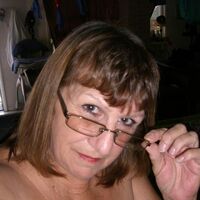
I welcome you to my place where you'll find my inter most feelings expressed through my poetry. And through my writings I invite you to enjoy and discover a little more about my life. I started writing when I was in my early teens, without having previous knowledge of life's challenges. I found out very early that if one really wants to progress, you will discover answers for yourself. To me my style of writing is unique, mainly because it comes from deep within my heart. I consider my words a mixture of emotions and thoughts of my spirit and life, written in the form of poetry. Through this web site I hope to share with you a little of the pleasures I enjoy so much. And through my poetry I hope to capture a bit of your interest. When I write I try to portrait my inspirations and my feelings and through my poetry I find answers. If I'm really lucky my poetry finds it's way to paper. For this reason I invite you to share with me a walk through my words.






